This is a Minolta Maxxum 650si Date, a 35mm single lens reflex camera produced by Minolta starting in 1995. The 650si Date is a slightly updated version of the 600si, adding a date back and a panoramic mode, but is otherwise the same. When the Maxxum 600si was sold in Europe and Japan, it was known there as the Dynax 600si Classic and the α507si, respectively. The 650si was a midrange model in Minolta’s fourth generation of auto focus SLRs, loaded with nearly every feature available at the time, and upon it’s release, debuted a new user interface that reverted back to physical dials and knobs on the camera’s top plate, instead of buttons as was the trend of the time. The 650si gained popularity by people who preferred a more mechanical feel.
Film Type: 135 (35mm)
Lens: 50mm f/1.7 Minolta Maxxum AF coated 6-elements in 4-groups + others
Lens Mount: Minolta Alpha Bayonet
Focus: 1.5 feet to Infinity (50mm), 1 foot to Infinity (28mm)
Viewfinder: Fixed SLR Pentaprism
Shutter: Electronic Vertically Traveling Focal Plane
Speeds (auto): 30 – 1/4000 seconds, step less
Speeds (manual): B, 30 – 1/4000 seconds
Exposure Meter: 2x Silicon Photo Diode TTL meters with P, S, A, and M metering modes
Battery: 6v 2CR5 Lithium Battery
Flash Mount: Minolta Hot Shoe with Pop-Up in Body Flash, 1/200 X-sync
Weight: 818 grams (w/ battery and 50mm f/1.7 lens), 635 grams (w/ battery, no lens)
Manual: https://mikeeckman.com/media/Maxxum650siManual.pdf
How these ratings work |
The Minolta Maxxum 650si isn’t the most advanced camera or the best at anything. It likely has never appeared on a top 10 list of the best of any camera, yet, it’s perfect balance of semi professional features, excellent ergonomics, lens selection, and value has endeared itself as one of my all time favorite SLRs. This is my “go to” cameras when I want to shoot film without having to think. I love the Minolta Maxxum 650si and realize that not everyone might share my adulation for it, but considering these can still be picked up for rock bottom prices, you could do MUCH worse with a modern electronic SLR. Highly recommended! | ||||||
| Images | Handling | Features | Viewfinder | Feel & Beauty | History | Age | |
| 2 | 2 | 2 | 2 | 2 | 1 | 0% | |
| Bonus | +1 for the complete package, one of the most natural SLRs I’ve ever used, excellent knobs | ||||||
| Final Score | 12.0 | ||||||
History
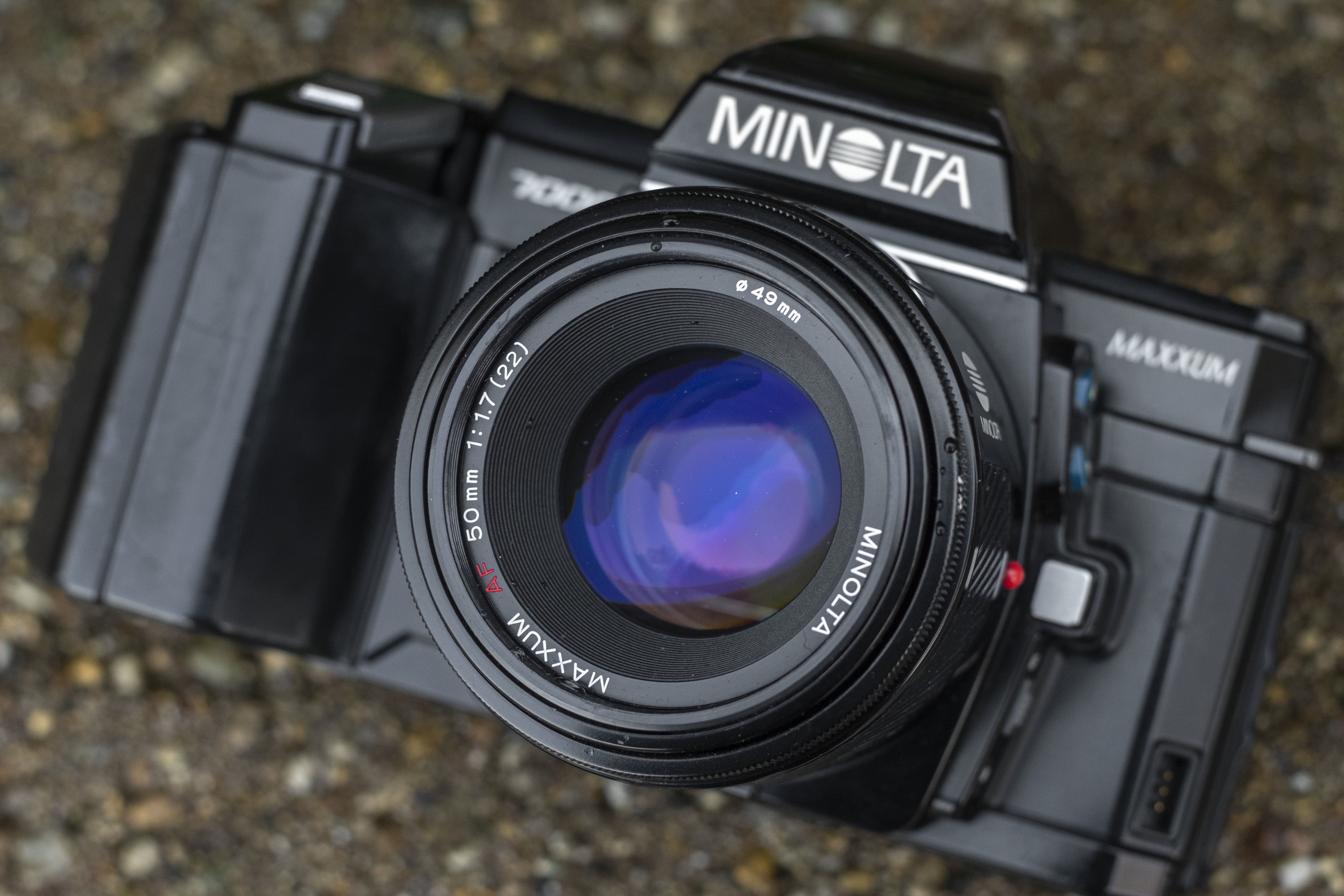
In February 1985, when Minolta released the Maxxum 7000 which was the world’s first 35mm SLR camera with in-body automatic focus, the world was put on notice. From that moment forward, every camera maker in Japan and elsewhere was playing catch up.
With their new SLR came a new lens mount and a new way to control the camera. Gone were mechanical knobs and dials and in their place were buttons…lots of buttons.
Buttons aren’t bad, and the Maxxum 7000 wasn’t the first camera to have them. Pentax had buttons on the Pentax ME Super and a large number of lower cost cameras had been using buttons for quite some time as well, but the Maxxum was the first SLR where everything was controlled by either a button, or some other kind of electronic switch. I wasn’t old enough to care about cameras (or buttons) in 1985, so I have no idea what people thought, but I have to imagine they felt that buttons were futuristic. The age of the fully automatic exposure and automatic focus camera with CPUs, electronic circuits, and LCD screens meant that tomorrow was here.
The problem with buttons is that once the reality sinks in that sometimes the future isn’t better, people start to miss how things used to be. Just look at the resurgence of film and vinyl records. In January 2020, Kodak announced that sales of 35mm film in 2019 more than doubled of what they sold in 2016. Just last September, the Recording Industry Association of America announced that vinyl record sales surpassed sales of compact discs for the first time since the 1980s signaling a preference for an old school tactile experience, rather than convenience.
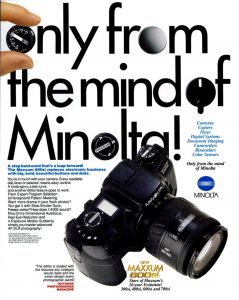
But of course, this review isn’t about vinyl records or buttons, it’s about cameras, more specifically, the Minolta Maxxum 650si Date. When it was released in 1995, it was part of Minolta’s fourth generation of autofocus SLRs after the original Maxxum 7000. Advertising for the Maxxum 600si which the 650si is based off promoted the dials on the camera, along with the tagline, “A step backward that’s a leap forward.”
The list price in 1995 of the 600si body only was $855, which when adjusted for inflation, compares to a little over $1500 today. I could not find any prices for the 650si, but it’s two additional features likely added another $50 – $100 to the total price. Of course, list prices and street prices were very different back then, so it’s not likely anyone actually paid that much for one.
Both the 600si and 650si were well equipped models, featuring a long list of state of the art features that an advanced “prosumer” 35mm SLR would have. It supported every popular auto exposure mode of the day, had an advanced TTL phase detection auto focus system with three CCD sensors for maximum accuracy, the electronic focal plane shutter had an infinitely variable range of 30 seconds to 1/4000 in auto exposure mode, a fast 1/200 flash sync, red-eye reduction, interchangeable focusing screens, and a whole list of other features.
In the following 2 page preview of the Maxxum 600si, Herbert Keppler proclaimed it to be a camera designed the way manual focus SLRs used to be, in which the camera’s controls were easy to locate and understand. The short article lists many of the camera’s best attributes, but also suggests it could been even better with an AF assist lamp, backlit LCD, and better knurling on the knobs. It’s a short review, but Keppler concludes it saying that there’s nothing that should stop anyone from considering one.
For as much of a “leap forward” the 600si/650si’s tactile controls were, it must not have appealed to as many as Minolta had hoped as it’s replacement, the Dynax 505si went back to a more familiar electronic control layout along with every other SLR in Minolta’s line up.
The Maxxum 600si/650si was sold as an advanced amateur camera, and perhaps this segment was still expecting forward thinking technology, and not retro controls, but in the years since as the entire act of shooting film is retro, cameras like the 600si/650si will likely appeal to those looking for a blend of “old meets new”. I did not initially seek out this 650si Date for it’s retro controls, but after picking it up and feeling how natural it felt to me, I quickly became a fan and think that it would do the same for anyone reading this review.
As I mentioned earlier, the 600si/650si isn’t the best at anything and likely won’t appear on anyone’s top 10 list of anything. It’s strengths are in the complete package. This is a camera with all the technology you need, a control interface and ergonomics that are as familiar as it is modern, and with the support of Minolta’s excellent lenses, you could do a lot worse!
My Thoughts
Caution, Fanboy Warning! The Minolta Maxxum 650si Date is one of my favorite “everyday” cameras. This is a model that I love to use, and is one that is my regular go-to when I just want to shoot some film on a family trip, where I don’t want to risk a temperamental camera that might develop problems or deliver unpredictable results. Like other mid-90s autofocus SLRs, the 650si isn’t a camera that most collectors will seek out, and at a distance, really doesn’t even look at that special, but this camera is special to me, and I love using it. I’m only telling you this now as it definitely affects my opinion of this camera, but your mileage may vary.
I have to imagine that people with large camera collections often get asked what their favorite camera is. And like anyone with large collections, that question is really hard to answer because there’s so many things that go into a favorite. I am sure Jay Leno gets asked what his favorite car is, and maybe he has one, but I’d be willing to bet if you asked Jay Leno what his favorite daily driver is, it’s probably not his mint condition gold 1966 Oldsmobile Toronado, or the 9500 pound, 1600 horsepower, all silver Blastolene Special.
Likewise, as much as I like my Kodak Ektra or GOMZ Leningrad, they’re finnicky cameras that I don’t trust to capture precious moments when I take my family on a vacation. I grab the Minolta Maxxum 650si.
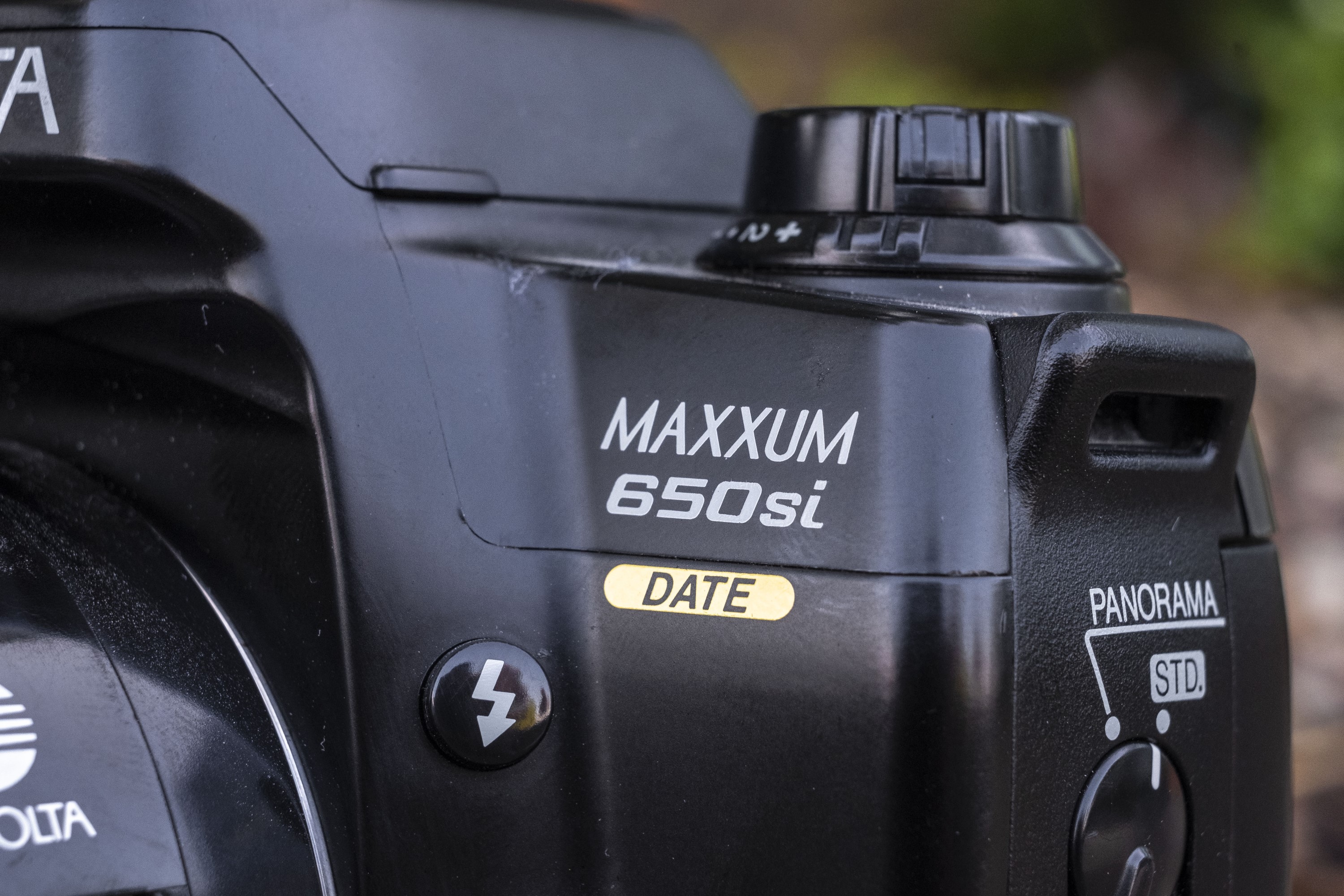
Writing reviews for cameras like these is difficult as I am so familiar with them, that they become second nature for me the use. I often struggle with writing reviews for them as they operate like so many other cameras of the era that even the first time film shooter should be able to pick one up and begin using it with little difficulty.
This is the reason I usually don’t write a lot of reviews for fully automatic film SLRs from the late 20th century as I really don’t need 3000 words to say “I like this camera”.
Although I have been a big fan of the Minolta Maxxum 650si for quite some time, and it has been my go to “zoo camera” many times, I originally wasn’t going to review it, but then I thought that if there is something about this camera that draws me to it a little more than so many other similar cameras from the same era, perhaps it will for someone else too.
Overall, the shape, size, and ergonomics of the Minolta Maxxum 650si are pretty standard. Without a lens and only the battery, the 650si body weighs 635 grams. With either the Maxxum AF 50mm f/1.7 or 28mm f/2.8 lenses mounted, the weight climbs to a very reasonable 818 grams and 834 grams respectively.
In the era the camera was built, the Minolta Maxxum 650si employed a number of weight saving materials, but don’t call it plastic. According to Minolta, the camera has a hybrid polycarbonate and metal body which feels solid in your hands, not too heavy, but not so light as to feel cheap. The lens mount is all metal, when ensures that all lenses mount with confidence and without any wiggle room. Gripping the camera under normal use results in no creaks or groans from the body. All of the gaps between the various parts are thin and consistent. I am unsure if the body is weather and dust sealed, but based on other cameras of this class, I bet it is.
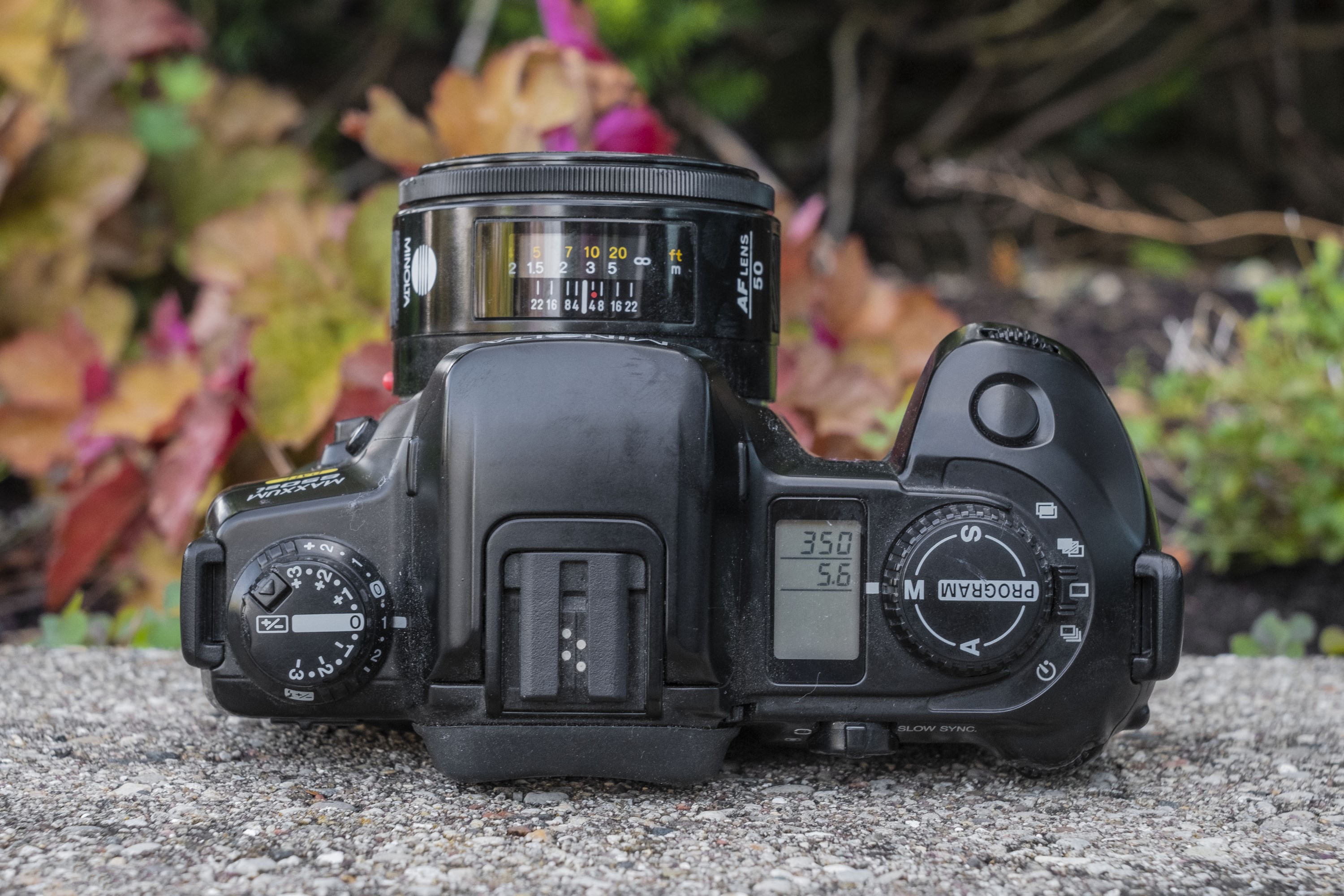
Up top, we see one of the highlight features of the camera, which are it’s mechanical knobs. In all of the marketing material for the 600si and 650si, a return to physical knobs was a huge selling point as it had been a while since new cameras had them. Starting in the early to mid 1980s, most camera makers switched to buttons and sliding switches with huge multifunction LCD screens to control the various functions of the camera.
While this probably seemed state of the art at the time, there’s something to be said about the reassuring click of a knob as it is turned to a desired setting, or being able to immediately see what setting you’ve selected without having to power on the camera’s LCD screen and decipher what can sometimes be a huge number of tiny icons.
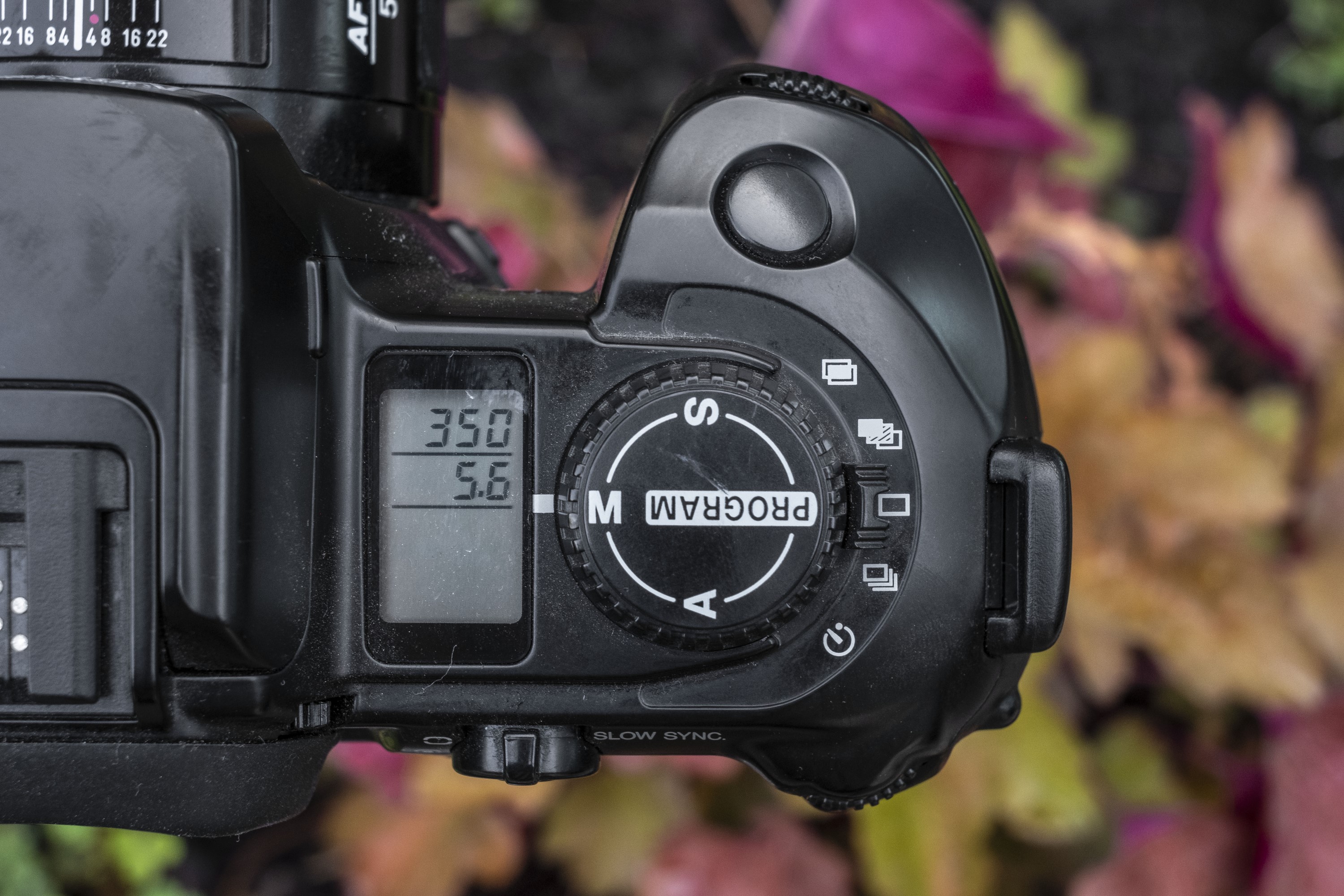
Of course, not every function of the camera can be controlled by a knob, as there is still a smaller LCD screen which displays selected shutter speeds and apertures set in each exposure mode. Multi-function control wheels on both the back and front edges of the right side of the camera are used to scroll through various settings, still keeping the camera in line with other 1990s SLRs.
Atop the pentaprism is Minolta’s proprietary flash hot shoe connection which is kind of like a normal hot shoe, but inside out. You need dedicated flashes to work with this camera which is kind of a bummer, but at the very least, Minolta did offer some VERY good flashes to accompany their SLRs of the era.
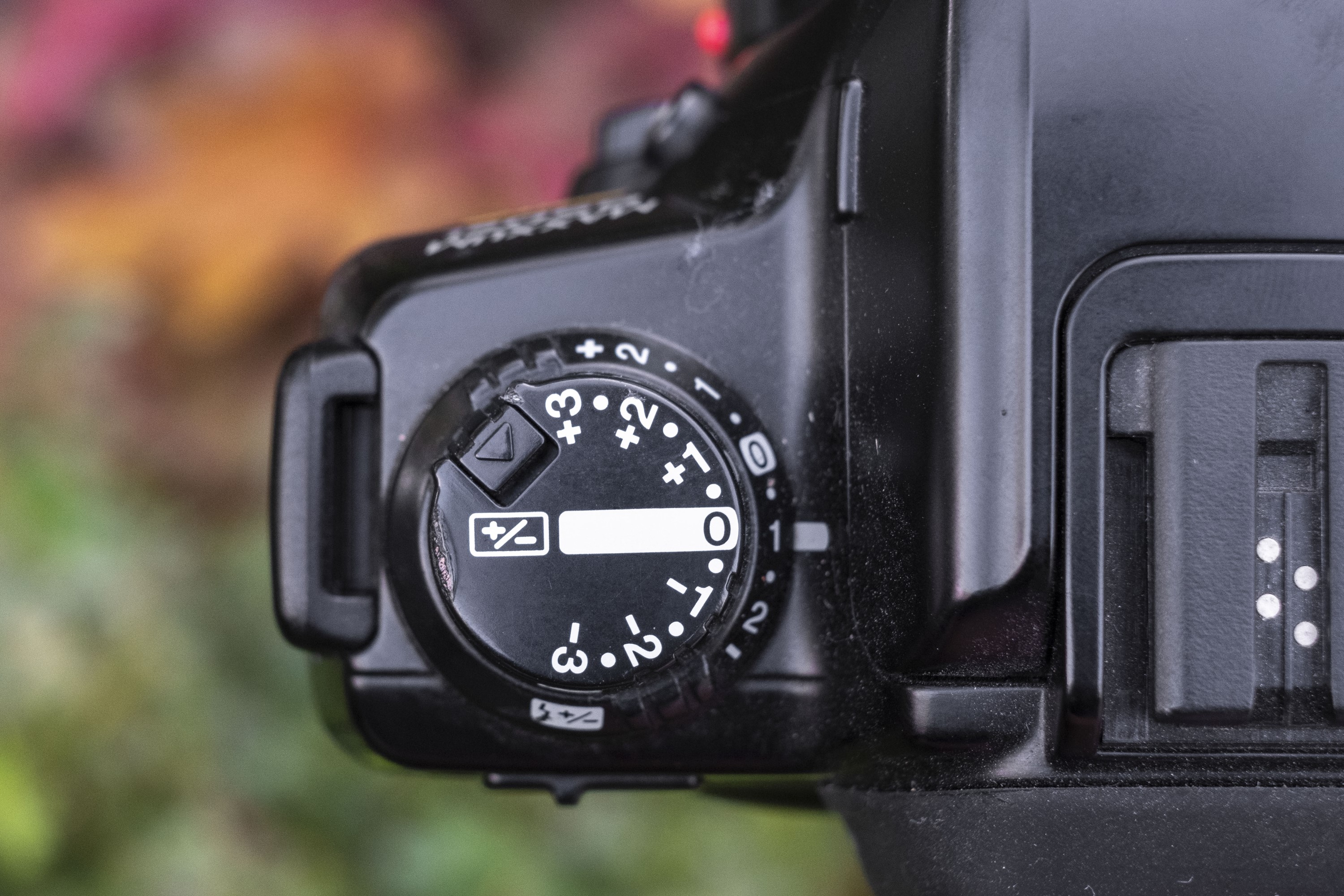
To the left of the prism is a two level exposure compensation dial, the top part which controls general exposure, and the bottom which does only flash exposure. The top dial has a small lock button which must be pressed in to avoid accidental changes of exposure compensation. I found that I REALLY liked the layout and feel of these dials as I am more likely to shoot electronic cameras like this in Aperture priority than full Program mode and being able to quickly add or subtract some exposure with my left hand while keeping the camera to my eye feels very natural to me.
While it might be a disappointment for there not to be a dedicated knob for shutter speeds, as is the case on some “retro” digital cameras today, it’s not nearly as big of a deal as you might think, as having quick access to EV compensation while leaving the metering system on, works surprisingly well.
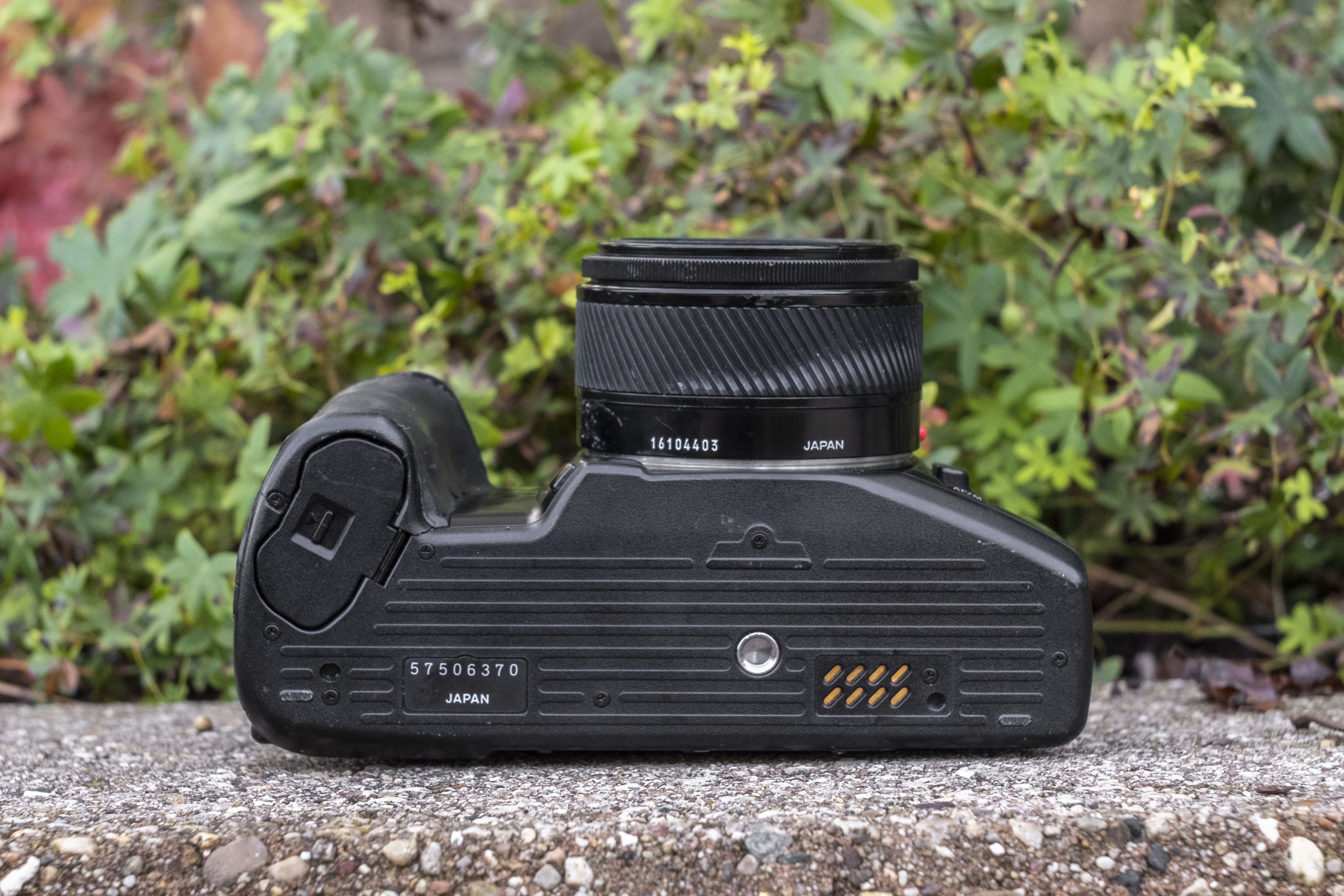
The bottom of the camera has the opening for the 2CR5 battery compartment, a centrally located 1/4″ tripod socket, the camera’s serial number, and electrical connections for a motor drive.
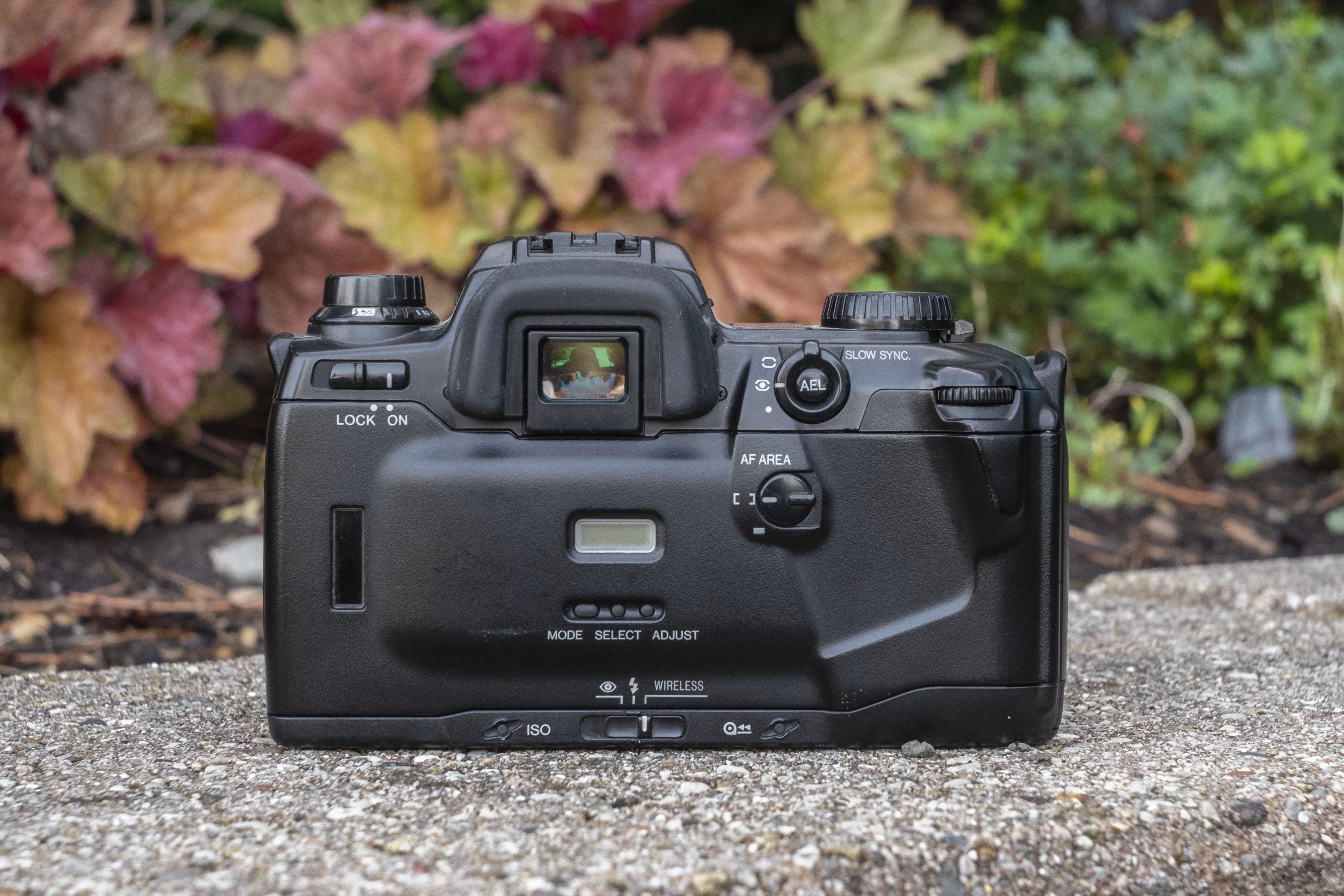
The camera’s back is one area in which the 650si differs from other variants of this camera as it has the controls for the date back. Although I have no use for the date back, I actually like the slight buldge it adds to the door, breaking up what would otherwise be a monotonous flat piece of plastic, err, I mean hybrid polycarbonate.
Speaking of the body material, the body of the Minolta Maxxum 650si holds up really well, and much better than other 1990s Japanese SLRs like the Nikon N90s that develop a sticky residue all over them. Looking at the condition of the back, it looks brand new, and other examples of this same camera look the same way.
I won’t go over every control on the back, but will point out three things, the first is an adjustable diopter wheel on the right side of the pentaprism which is a nice touch for people like me with prescription glasses, the location of the AE Lock button is in a perfect position for my right thumb while holding the camera, and the somewhat odd location of the camera’s power switch in the upper left corner. Being used to Nikon and other brand SLRs in which the power switch is on the right, this is something that causes me a short delay each time I pick up the camera and have to remember how to turn it on.
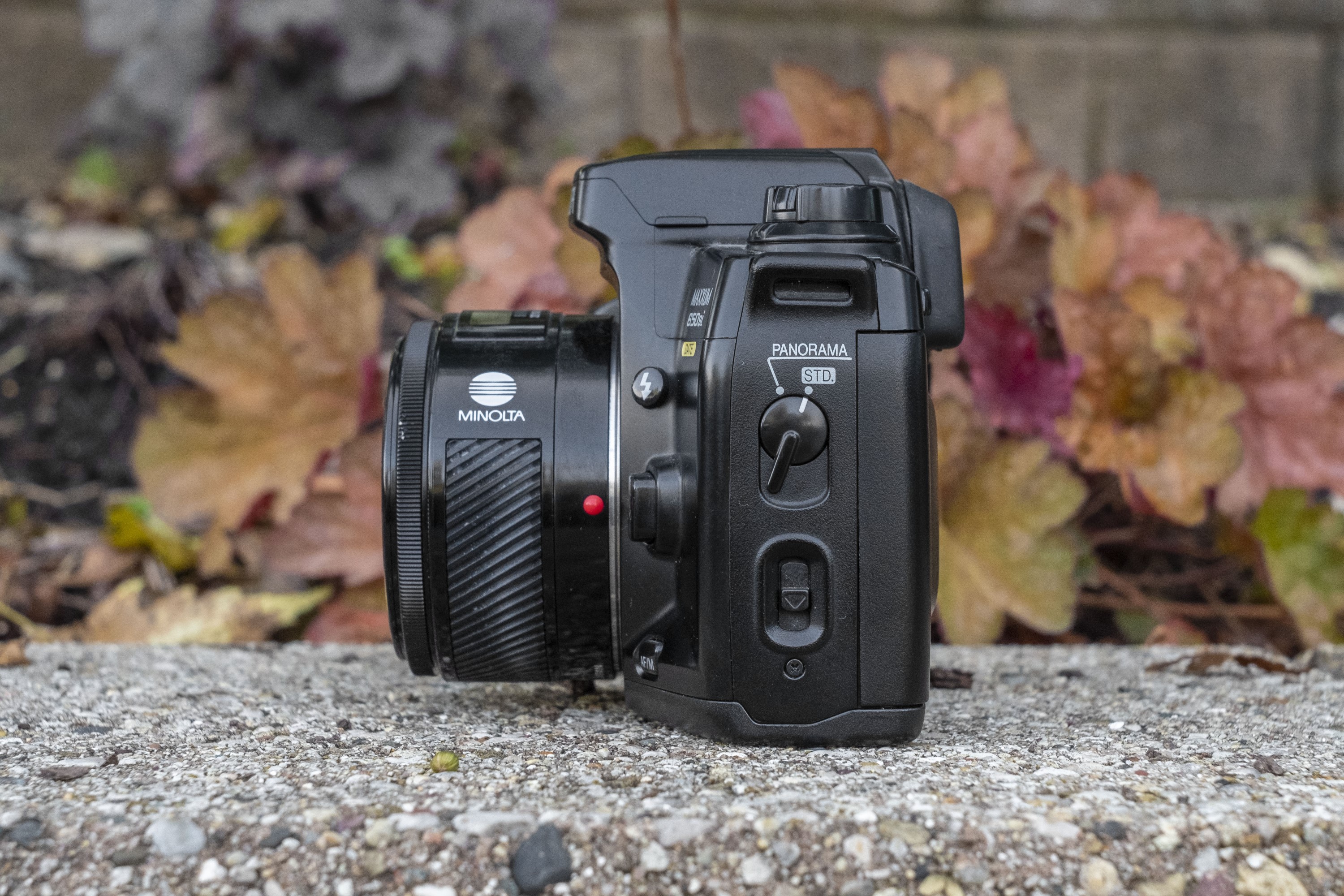
The camera’s right side has quite a bit going on, including another difference between the 650si and the 600si, which is a switch for the completely useless panoramic feature which puts an 18mm x 36mm mask into the film plane and viewfinder. Above it is one of the camera’s wide strap lugs, and below it the door release for the film compartment. Notice on the side of the mirror box is a button for controlling the pop up flash and various in body flash modes.
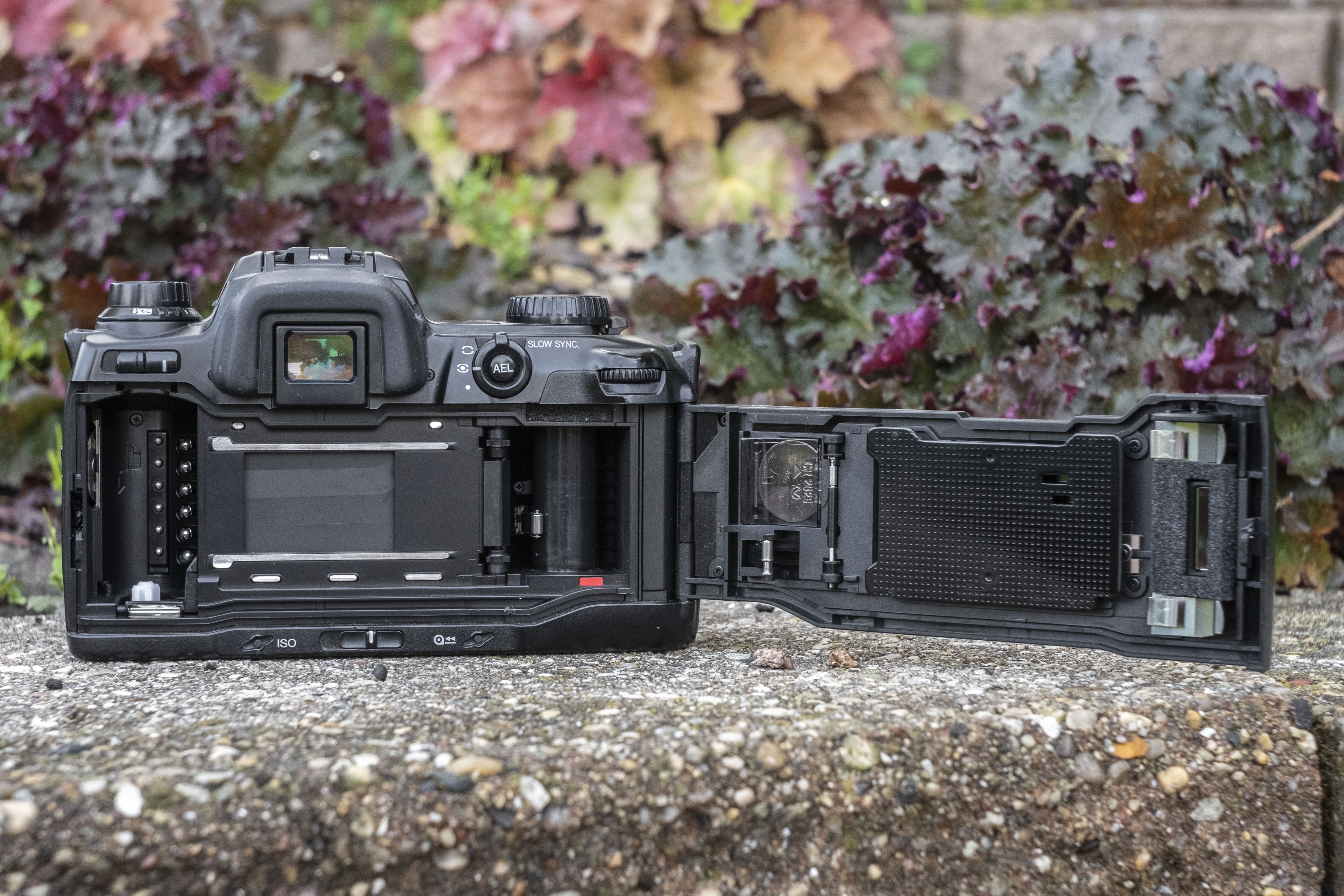
The film compartment is typical of other 1990s film SLRs, featuring things like DX film detection, a quick load feature, polish film rails, an oversized and dimpled pressure plate, and for the date back feature, the battery compartment for the CR2025 battery to make it work.
The Minolta Maxxum 650si has no door or film channel light seals, only featuring a small piece of felt above the take up spool and a foam gasket around the rear film peep hole, both of which have aged well and did not need replacement. Older cameras from the 60s and 70s usually have foam seals that degrade over time and must be replaced, but not enough time has passed since when this was a current model to predict whether or not these will need replacement on this camera in another couple decades.
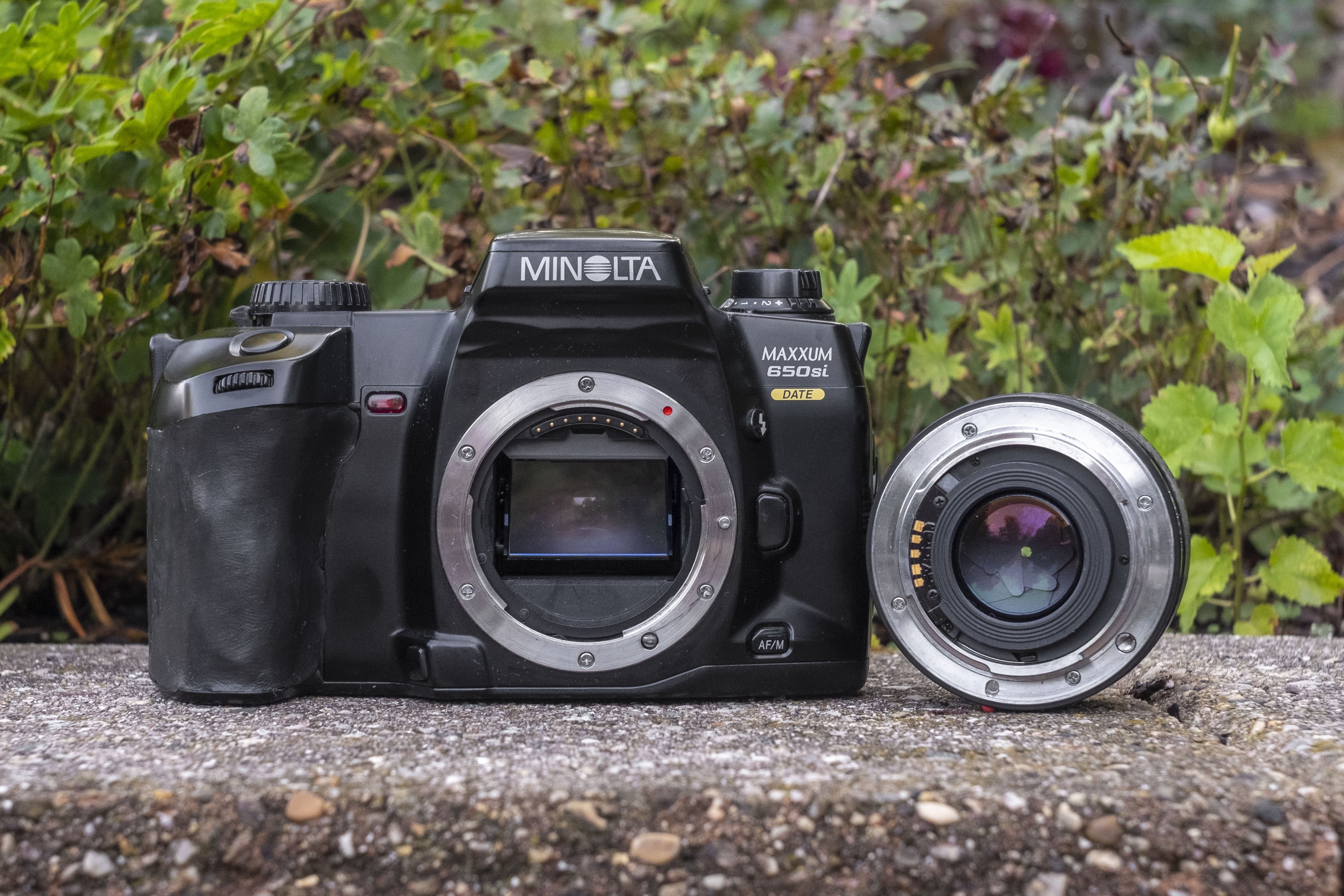
Minolta famously abandoned their earlier SR/MC/MD mount with the release of auto focus lenses for the Maxxum 7000 which predates Canon’s decision to do the same thing with the EOS 650. This mount, then called the A or Alpha mount, is also called the α-mount, and sometimes even the Sony Alpha mount, is still used today, so lenses for the 650si can be used on everything from that original Maxxum 7000, all the way to Sony’s latest DSLR, currently only the α99 II.
A large and easy to press button near the 3 o’clock position around the lens is the lens release. Pressing this while giving the lens a counterclockwise twist allows the lens to be removed, with installation the exact opposite.
Other things you can see up front are an electronic depth of field preview button, AF/M focus mode button, and the red countdown LED for the self timer.
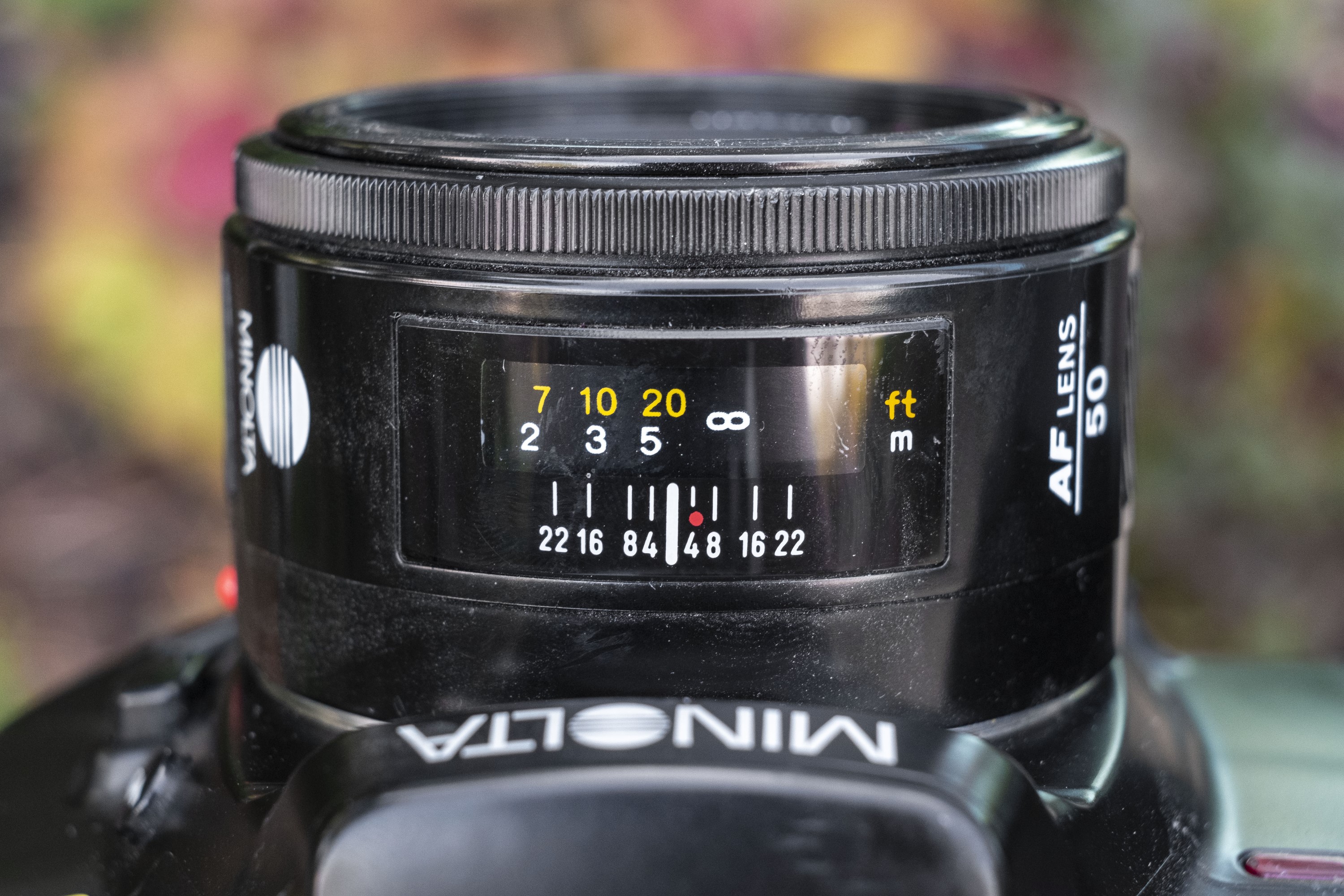
Of the three Minolta autofocus lenses that I use on the 650si, they all have this clear plastic window on the top that shows both the focus scale in meters and feet, along with a simple depth of field scale. Neither are especially useful, especially considering I’d bet that 99% of these lenses were used with autofocus on, but it’s nice that they’re at least there.
The viewfinder on the Minolta Maxxum 650si is as good as any ever made. Which to be perfectly honest, compared to other top-tier SLRs of the late 1990s and 2000s is par for the course. Ever since the first 35mm SLRs were made in the 1930s, manufacturers have been looking for ways to improve viewfinder brightness. First, by using higher quality glass, then Fresnel patterns, and eventually laser etched patterns, there gets to be a point where you can’t physically make a ground glass any brighter while still being able to focus an image on. Whatever threshold exists for the brightest viewfinder screen ever, the 650si definitely has it.
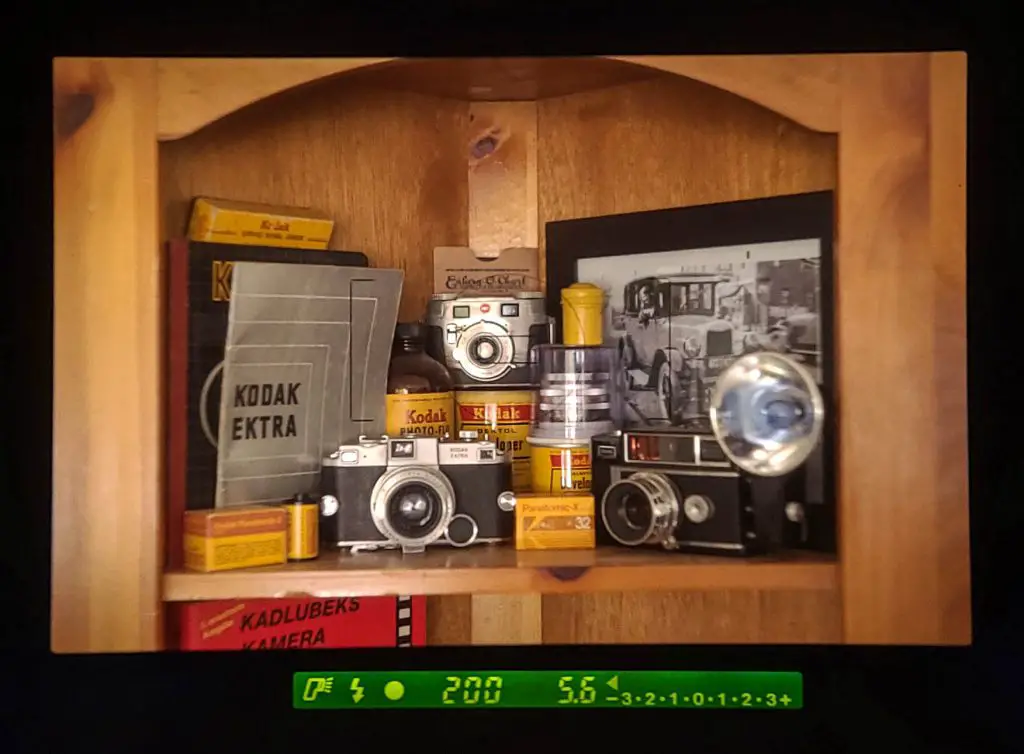
Like other auto focus SLRs of the era, there are no manual focusing aides, only featuring metering brackets and circles which show where the sensors are looking. Along the bottom is a green backlit LCD screen that shows all the usual things you would see in a modern SLR, including flash mode, focus confirmation, shutter speed, aperture, EV +/- and a few others.
One additional feature which I absolutely love is only visible with the camera in Manual metering mode which repurposes the EV +/- scale into a “recommended metering” scale. Unlike lesser SLRs in which manual mode deactivates the meter, in this camera, the meter is still active, and uses this scale to offer suggestions on whether or not your chosen shutter speed and f/stop will result in an accurately exposed image. If the meter agrees with you, the dash above the 0 will blink. If you’re over or under by up to 3 stops, the dash will blink above how off you are, and if you are beyond 3 stops, or the meter cannot detect enough light, arrows on both sides of the scale will blink to let you know you are way off. This combined with the focus confirmation dot means you can have as much or as little control over fully automatic features like focus and exposure with this camera.
At the beginning of this review, I was worried I would have a difficult time explaining all of the reasons I like the Minolta Maxxum 650si so much, but I think I’ve done a good job of covering the excellent build quality and ergonomics, comfortable grip, implementation of the EV +/- knobs, modern film compartment, bright viewfinder with excellent implementation of recommended exposure in manual mode, focus confirmation display, and the lack of a sticky back which so often plagues other cameras of it’s era.
Of course, for a camera to truly be great, it has to do a great job of delivering images, but did it?
Repairs
The Minolta Maxxum 650si came to me in perfect working condition, but had a problem that a huge number of Minolta SLRs from this period have, which is a crumbling hand grip. Looking at for sale copies on eBay, nearly every single one of them has grips that have already started to fall apart or show signs of cracking. Even if you somehow manage to find one with a grip that looks good, it is only a matter of time before it starts to fall off.
While this is only cosmetic, considering the grip is a part of the camera that is in continuous touch with your hand, feeling pieces of it disintegrating and the uncomfortable hard plastic beneath, is not only unpleasant, but it’s also messy and the old rubber pieces get everywhere.
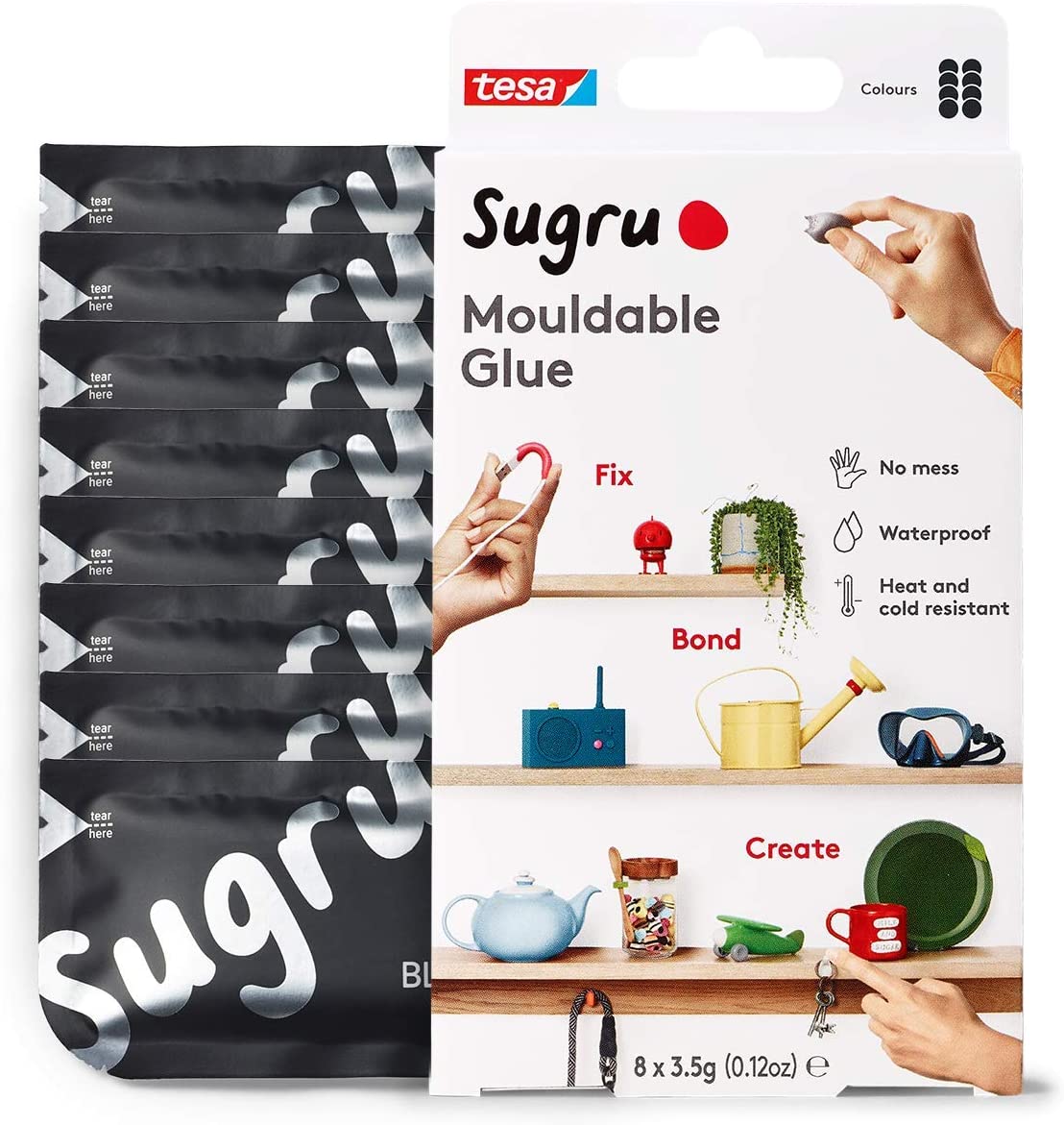
Original replacement parts haven’t been made in years, so to replace the grip on the Minolta Maxxum 650si (along with many other models) requires some DIY work. Although there are a variety of products that could be used to recreate a new grip, one that I had read about and wanted to try was a moldable glue called Sugru.
I have seen a large number of DIY projects using Sugru such as repairing broken USB cables, filling in missing letters on appliances, and even making bumpers for smartphones and other devices.
Sugru is sold in small 3.5 gram packages and when first opened, has the consistency of thick clay. It can be molded and shaped into any shape you require. It’s not especially sticky, but is tacky enough to stick to most surfaces. Once you have the product formed into whatever shape you want, you have to let cure for over 24 hours which lets it harden into a solid, rubber-y plastic.
I bought an 8-pack of black Sugru from Amazon for $16 and got to work peeling off the remaining bits of the camera’s original grip. When I had it down to bare plastic, there was an oily residue, likely from the original adhesive that I needed to clean off with 91% rubbing alcohol. With the bare plastic dry, I got to work pressing the Sugru packets into a shape that resembled the hand grip.
In total, I needed four packets to create a suitable grip. Working with the Sugru was not difficult as I simply pressed it into a rough hand grip and shaped it with my fingers until I was satisfied with how it looked.
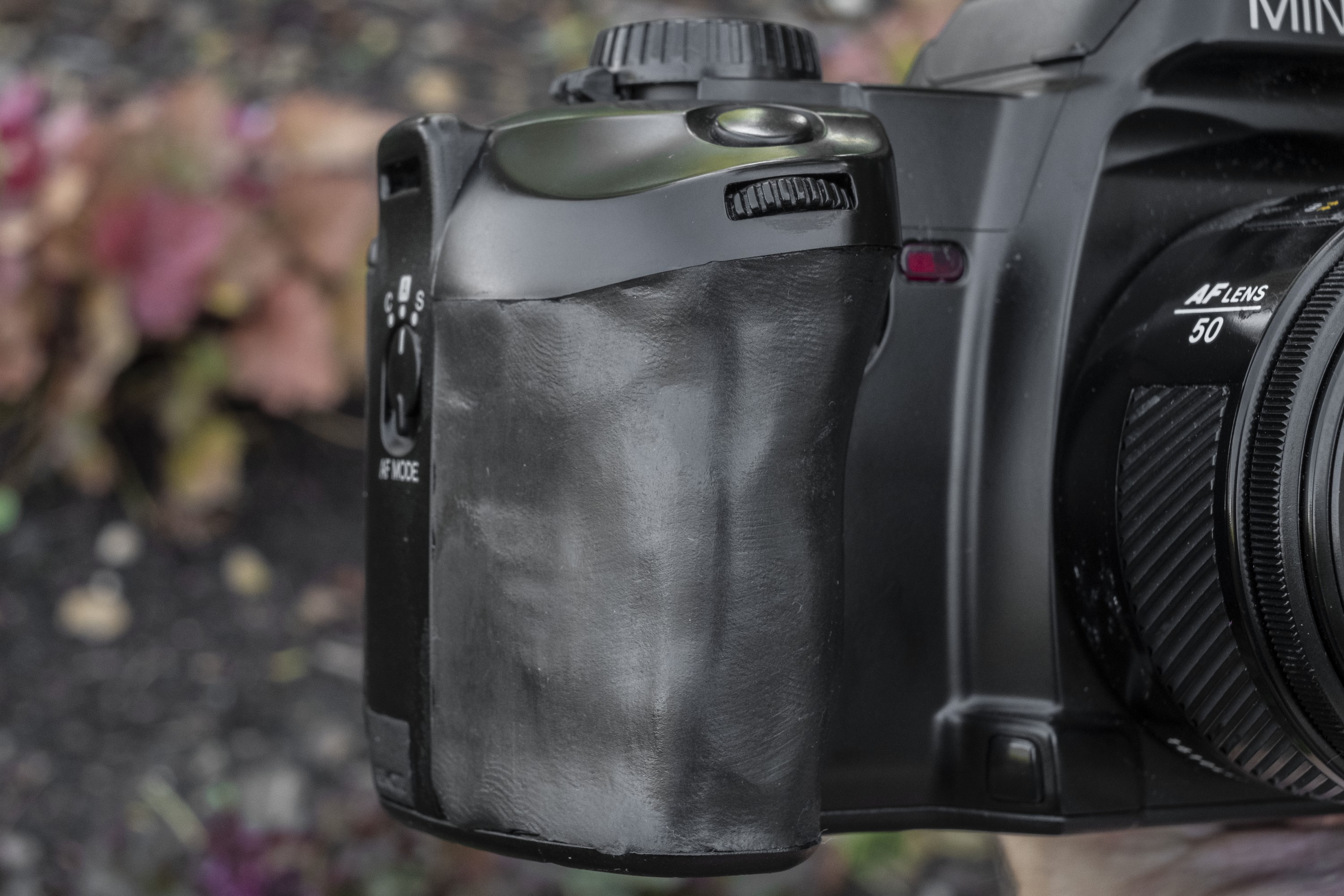
Once it dried, the finished grip wasn’t quite as perfect looking as the original, but it definitely feels great and looks way better than what I started with. The image to the left shows off the imperfections in the grip way more than it shows in real life. If I were to put this camera down on a table in front of you and you were to make a casual glance at it, you would have no idea the grip isn’t original.
I purposely left small dimples where the tips of my fingers naturally rested, and combined with the slightly grippy texture, gave me great confidence in handling the camera. Since the original grip was so degraded when I got it, I can’t give any apples to apples comparison, but the Sugru grip feels so nice, I can’t imagine the original being any better. Although I used black Sugru, it dries to a dark gray, which is slightly lighter than the black plastic body, further differentiating it from the original grip, but this slight difference was not a problem for me.
I was pleased with how the camera turned out enough to consider doing this again. The next time I encounter a camera like this I might actually use a completely different color which could possibly look better an intentional contrast looks better than slightly mismatched shades of black, but again, it’s not a huge issue.
My Results
I’ve had the Minolta Maxxum 650si for quite some time before writing this review, so I’ve had the chance to shoot many rolls of film, but I recently took it with me, along with three lenses on a family vacation visit some relatives in North and South Dakota, Montana, Wyoming, and Minnesota. As we were flying with 2 children and lots of luggage, space was at a premium for cameras, so I wanted to limit what I bought with, and I knew whatever I was going to use, needed to be dependable. I didn’t want to risk bringing an untested camera on a trip only to have it break or otherwise ruin images I would likely never be able to recreate.
All of the vacation photos were shot using fresh Kodak ProImage 100, and the black and white images are on bulk Kodak TMax 100.
The results from the Minolta Maxxum 650si are less about the quality of the lens as of course the lens is good. This is a modern era Minolta Maxxum AF lens which builds upon the reputation of Minolta’s previous Rokkor lenses. Sharpness is excellent corner to corner, contrast is perfect, color rendition is perfect, if I wanted to shoot bokeh, I’m sure I would have gotten nice out of focus details, and I saw no obvious flaws characteristic of lesser lenses.
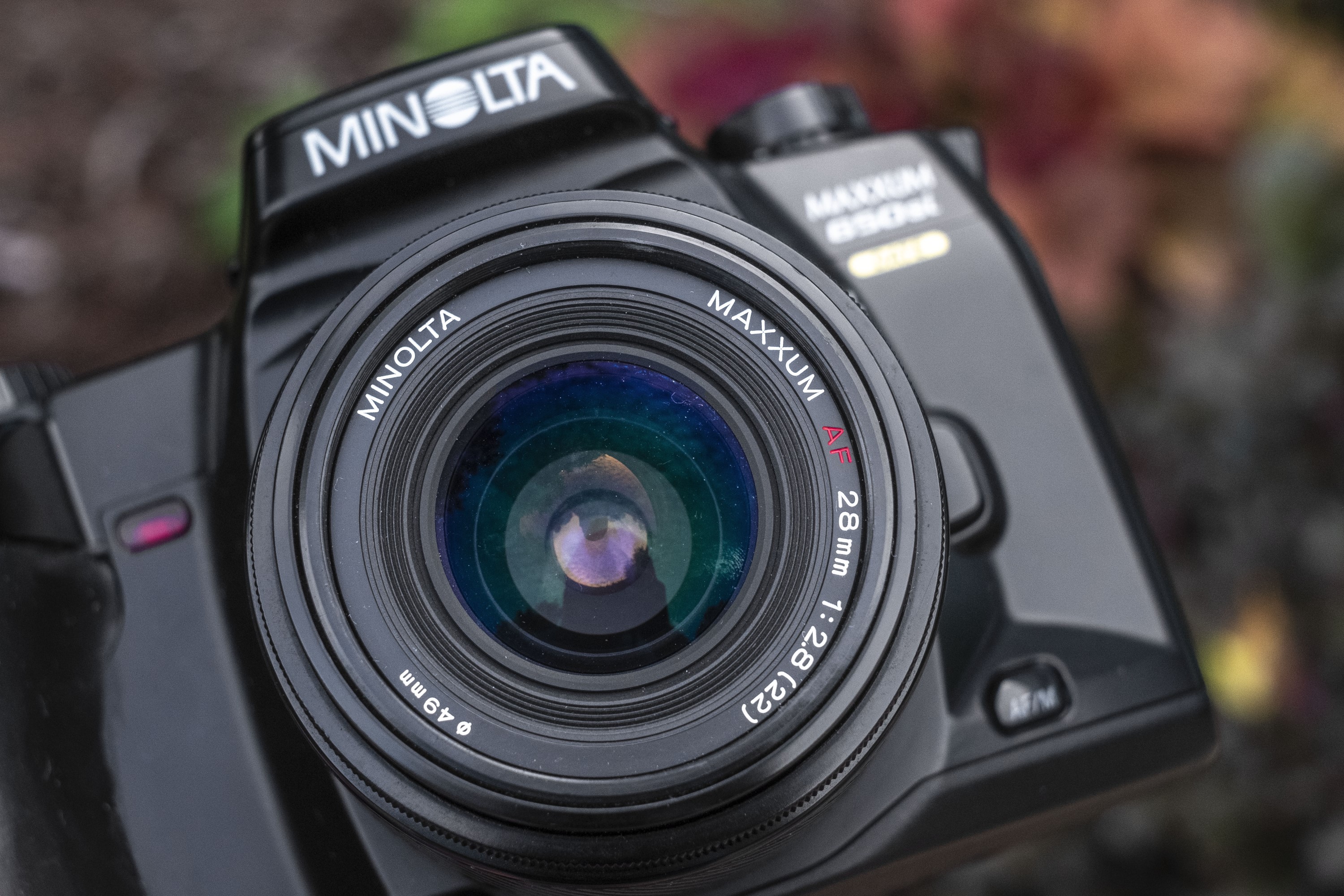
In fact, if I had one criticism of the Maxxum lenses, is that they’re from that modern era where the images are so technically perfect, they lack the type of character imperfect lenses have. The reason many people like shooting old lenses so much is because of their flaws, not because they make clinically excellent images.
That aside, you’re pretty much guaranteed to get great looking images. The metering and focusing systems did their job as good as can be expected of any late 20th or early 21st century camera might. The only time I didn’t quite nail focus was when using the Rokkor 300mm telephoto lens at small objects far away. A couple of times while shooting some prairie dogs, the lens had to hunt a couple of times to get it right. It eventually did most of the time, but had I needed to capture spur of the moment, perfectly focused images, I would have missed a few.
I lack the technical understanding of auto focus systems, nor the desire to learn whether or not this deficiency is because of the lens, something within the 25+ year old autofocus camera, or simply “that’s just how it is”. I am going to make an unscientific guess at the last option as I sometimes miss focus on my Fuji X-T20 too.
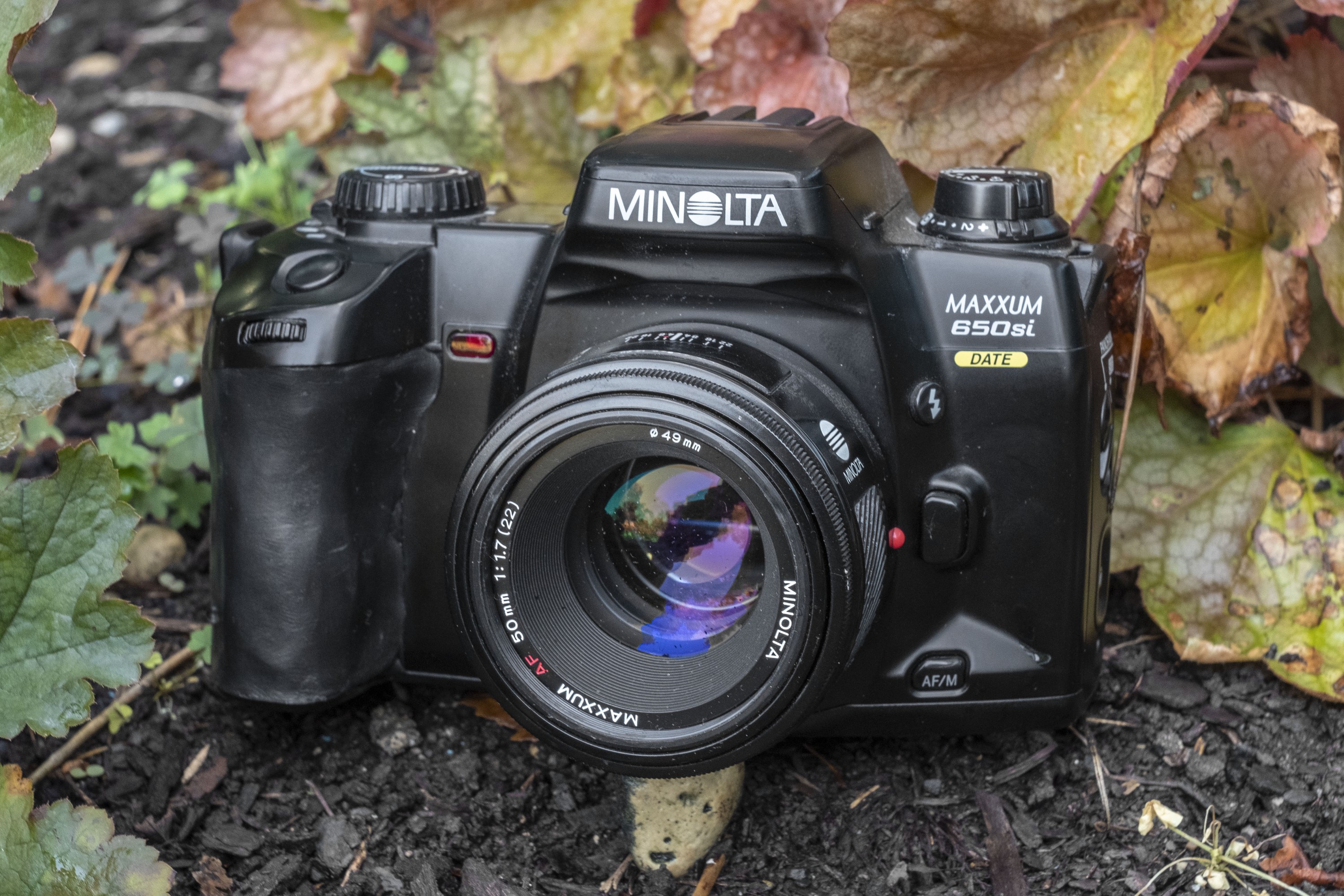
Beyond all the measurable characteristics of the Minolta Maxxum 650si, the thing I like most about it is in how well it works together. This is a modern camera with all the modern features you’d come to expect, with an excellent control layout, excellent lenses, good looks, and a camera that I enjoy using.
There were a LOT of electronic film SLRs made in the 80s, 90s, and early 2000s, and I have not shot them all. I am quite certain that there is some Canon, Nikon, Olympus, or Pentax model out there with the same features and just as good ergonomics that I probably would have liked just as much, but I think I’ll just stop with this one. It’s not that I don’t want to keep trying excellent cameras, it’s that now that I found my “go to” family vacation film SLR, I’d rather spend more time looking for less common, quirky, or flawed cameras to write about. Besides, I doubt I’d get too many repeat visitors to this site if all I ever reviewed were the Nikon N65 or Canon EOS Rebels.
But my take on the Minolta Maxxum 650si is that I love this camera and I am certain you would too. Maybe it’s the great lenses, the great performance of the metering and auto focus systems, the bright and easy to use full information viewfinder, the use of mechanical knobs rather than buttons on the top plate, the excellent ergonomics, or the long list of features, but regardless of what you are looking for in an automatic SLR, this is a camera that checks off all the right boxes for me, and I am sure it would for you too.
Related Posts You Might Enjoy
External Links
http://camera-wiki.org/wiki/Minolta_Dynax_650si_/_Maxxum_650si
http://www.jwhubbers.nl/mug/600si_review.html
https://cameragx.com/2017/12/31/minolta-600si-the-return-of-buttons-and-knobs/
https://bobnuttmann.com/2018/12/24/the-minolta-600si-and-why-you-should-buy-one/
https://www.opticallimits.com/active/review/reviews.jsp?id=10054

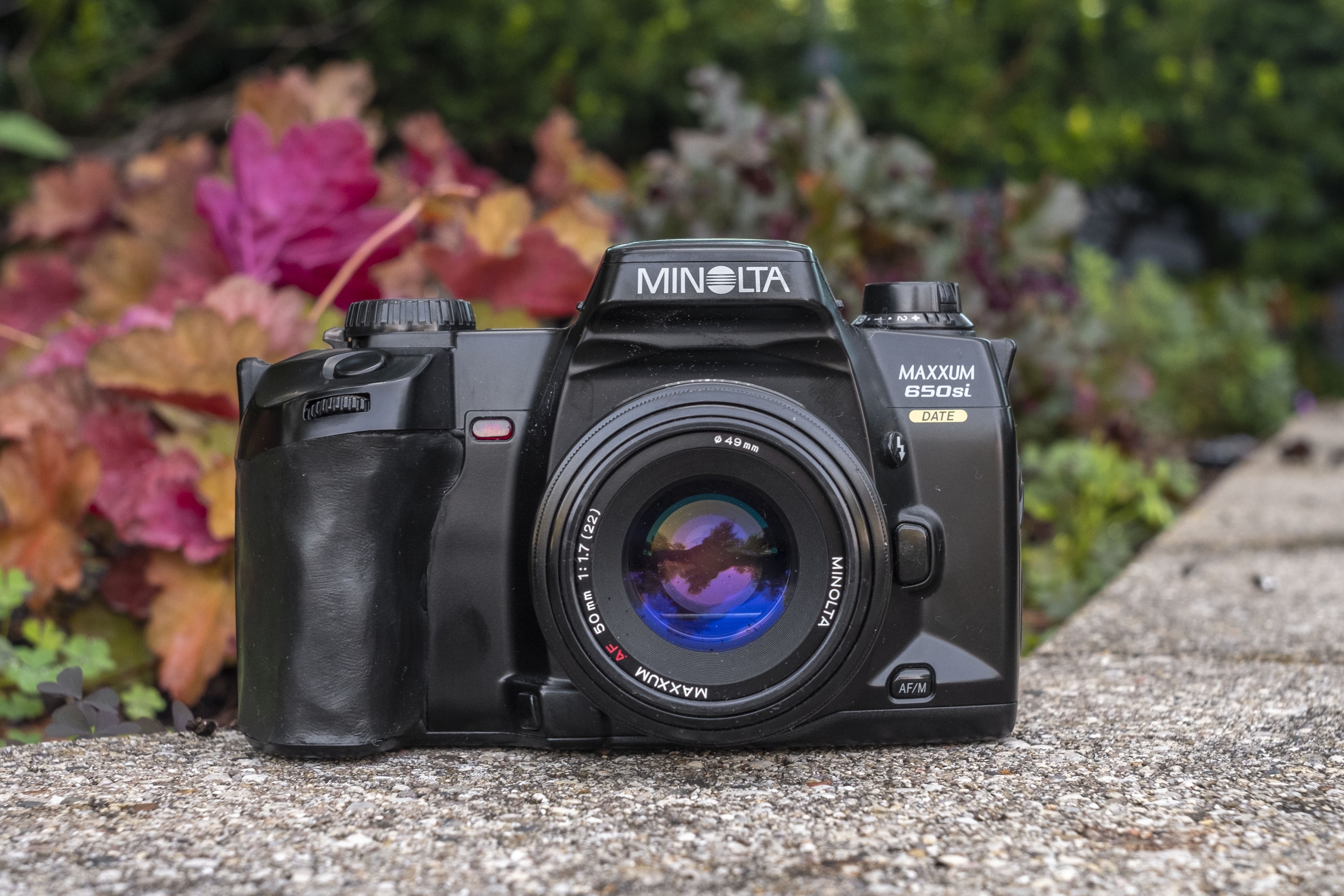
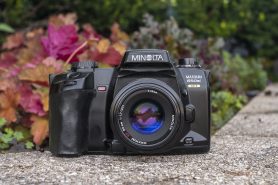
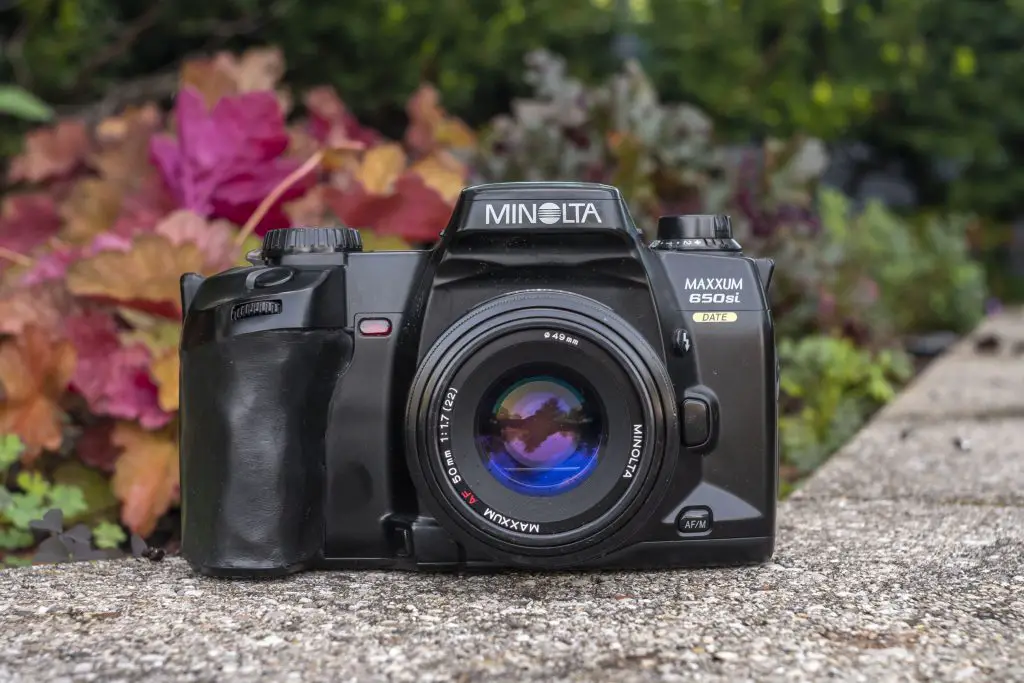
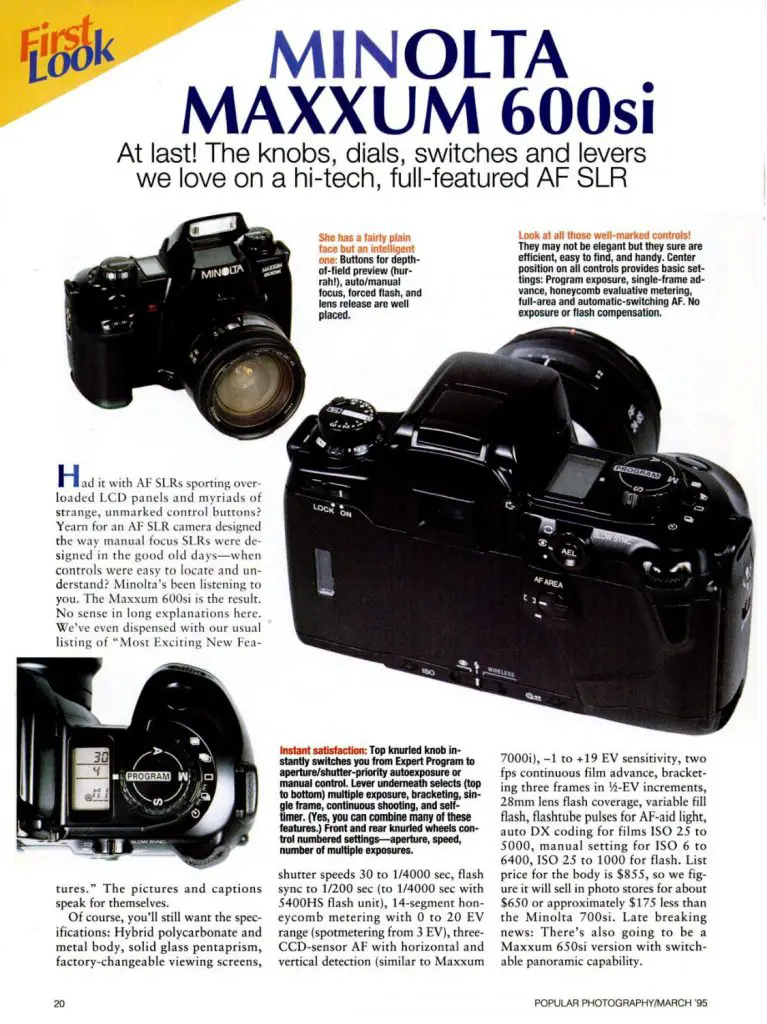
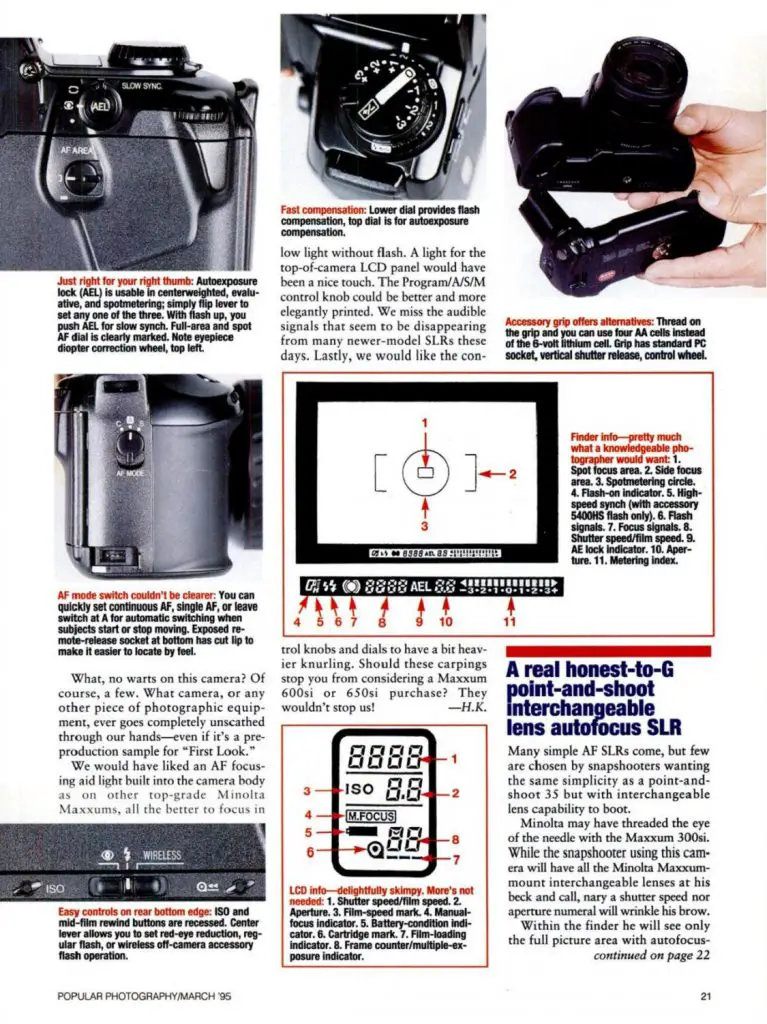
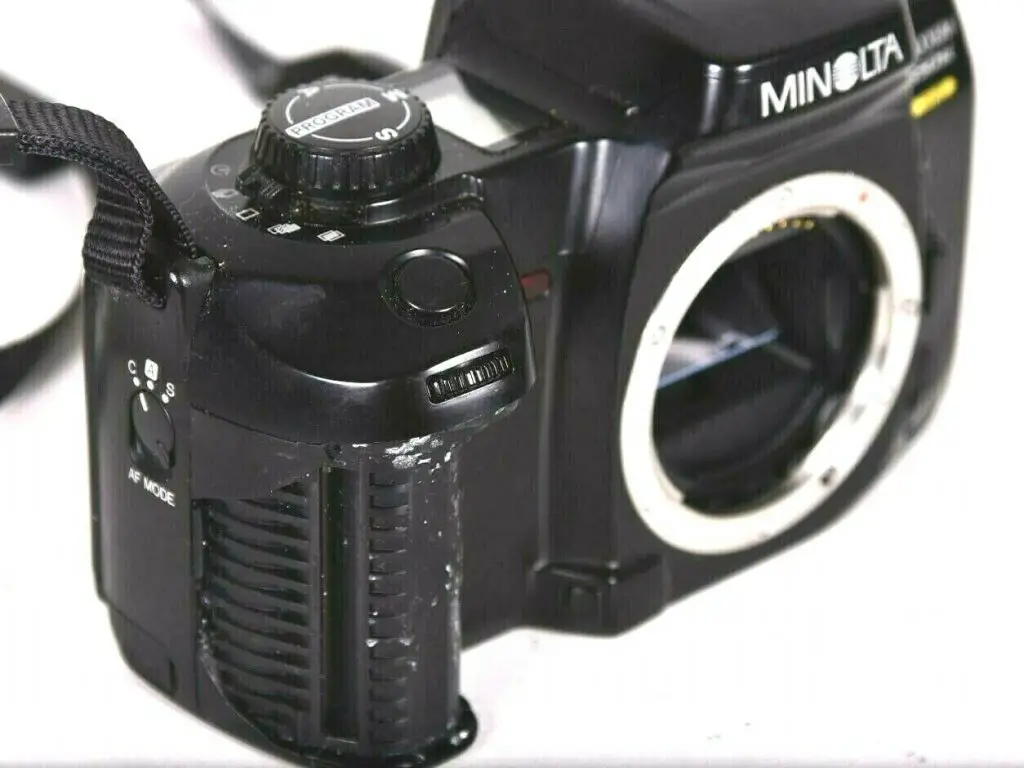
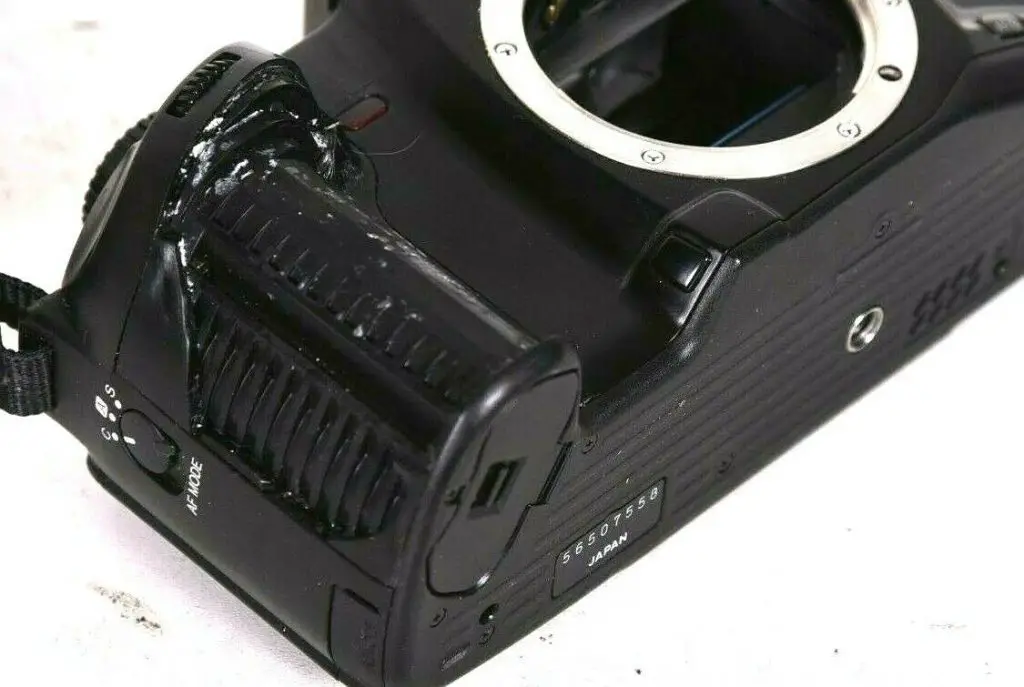


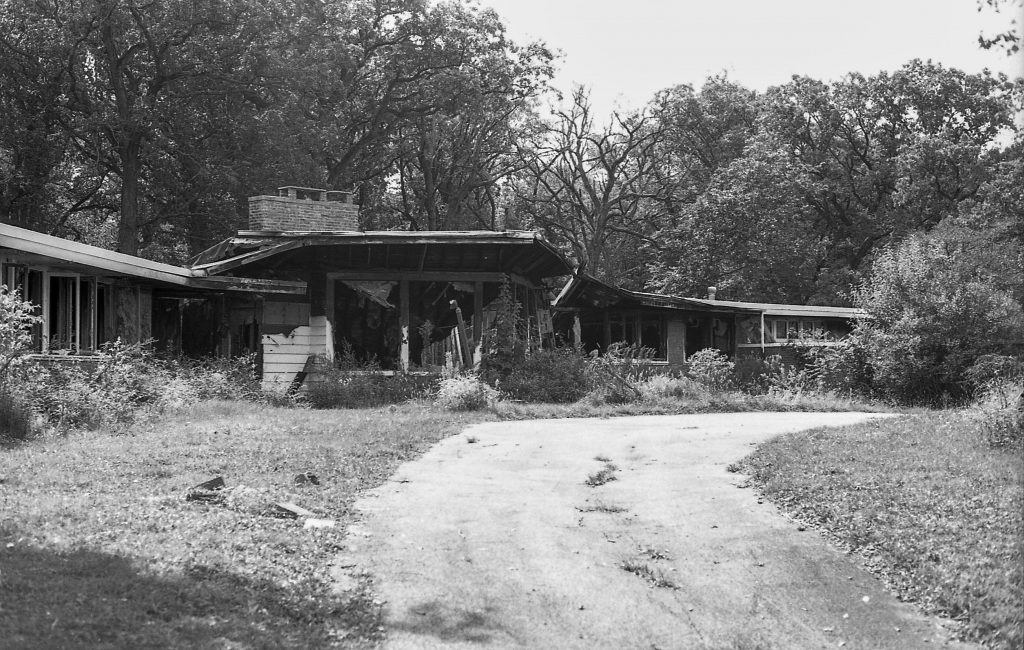

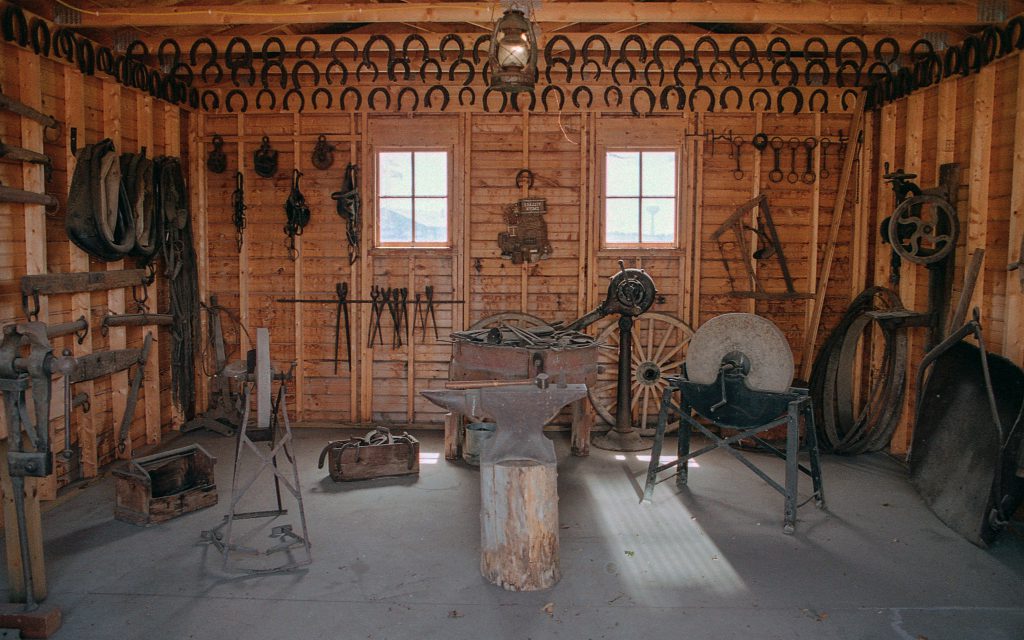











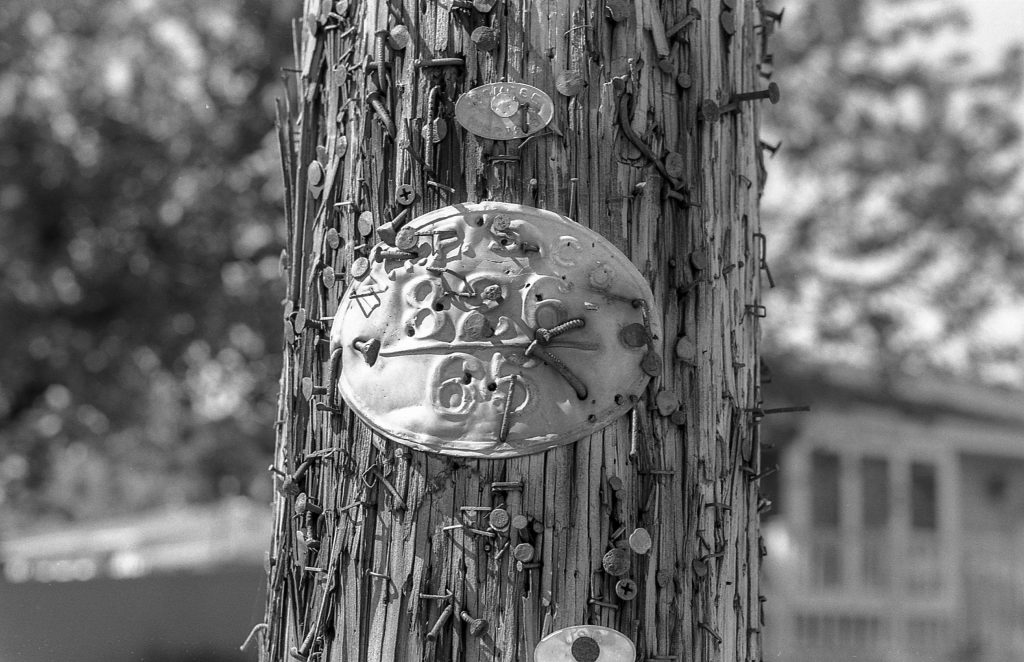







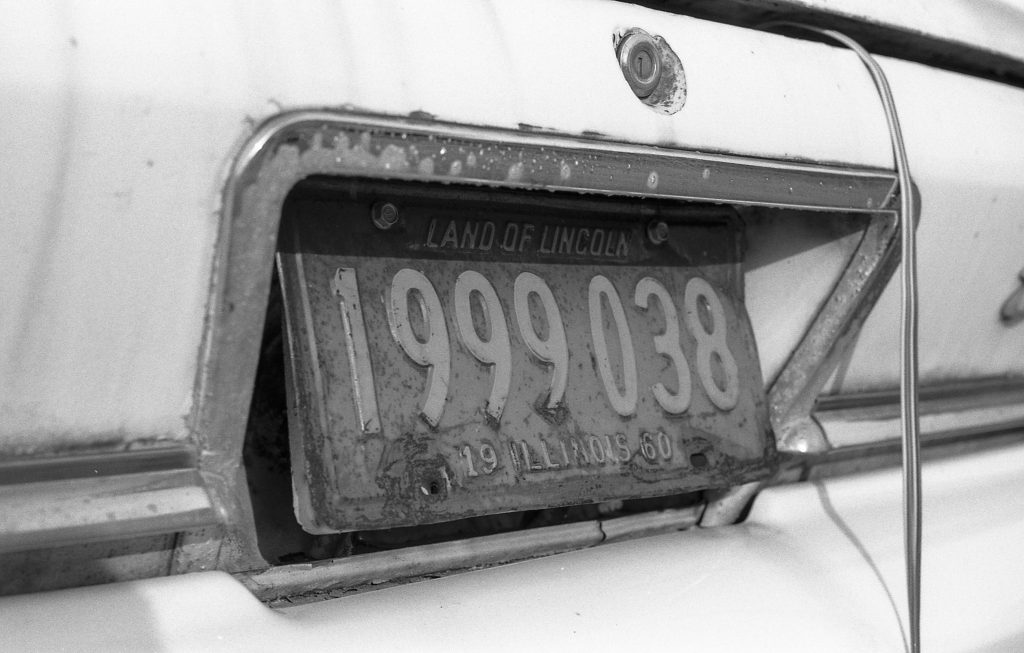

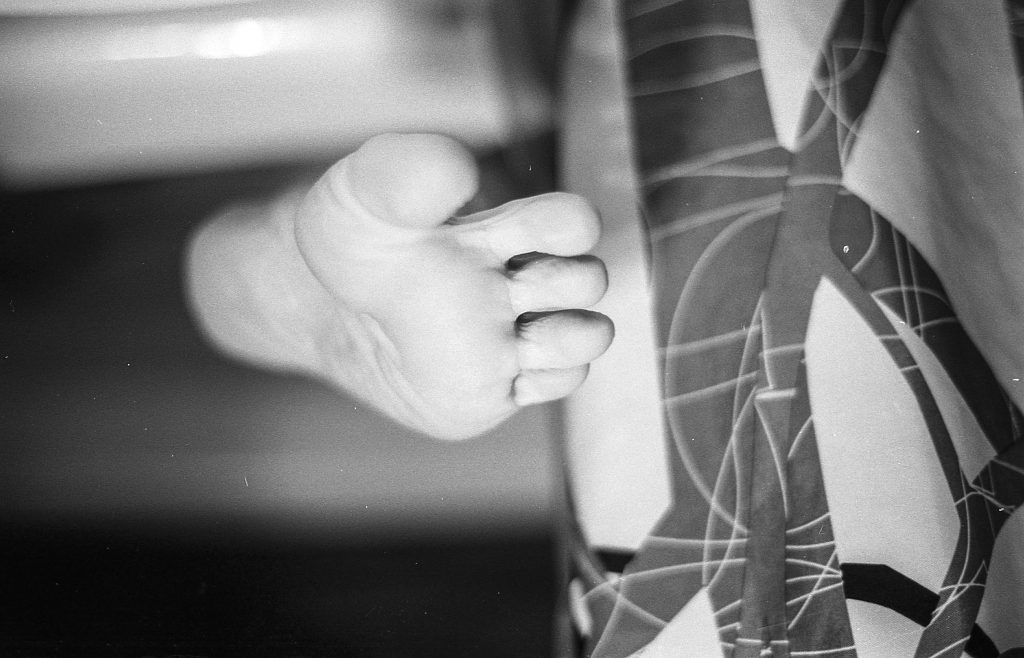


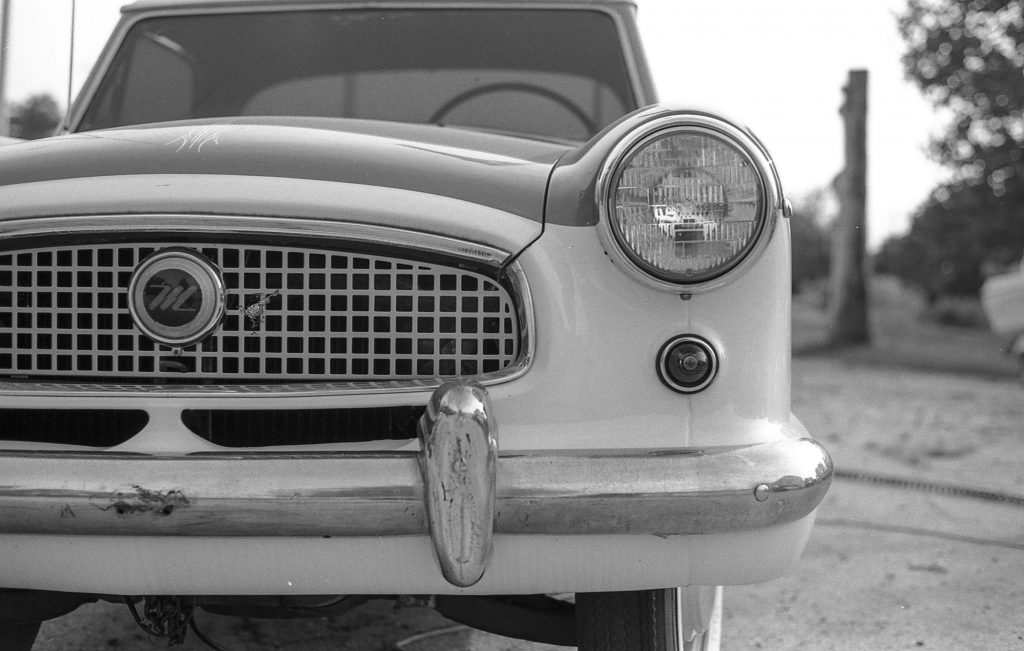
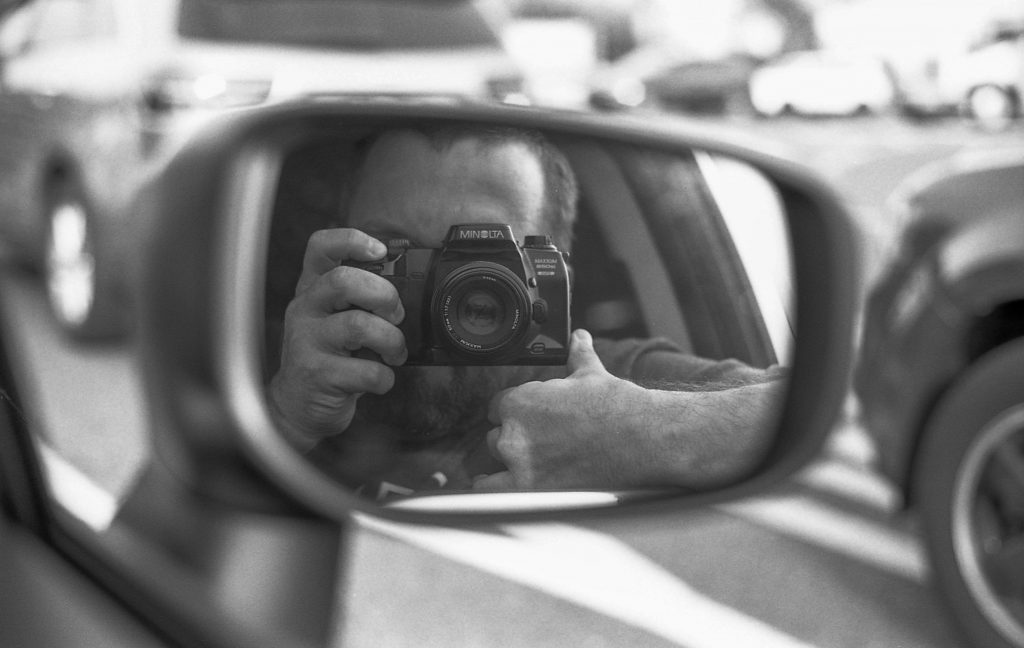



I have the 600si, 700si, and 800si along with the 7000, 9000, 5, 7 and last the 70. Now the 70 is plasticy in feel much like the P&S cameras of the 90s. It is still quite capable. The 7000 isn’t used all that much after going from dials on manual cameras to little blue buttons but being a Minolta collector one has to have one or two. I just recently took the 600si out to shoot some B&W aboard the USS Hornet where I restore. Good heft, easy to hold and handle and I used in aperture priority and shutter priority depending on lighting levels inside and outside. Not really needed for what I was doing since I had all the time in the world and am on the ship every week. Still an enjoyable camera to use and tempting. I will have to compare it to my Nikon 80s, and 90 along with the Canon EOS 630 and 650. Yet can it replace my original 101, the XE7, XD11, F2, or LX in the 35mm queue? Fact is they are all enjoyable but if I was in a fast moving situation and had only one chance at a fleeting shot this would be a go to camera rather than one where I have to spend time getting into focus and setting the exposure.
Excellent review on a camera that most new analog users ignore or under estimate. I have no idea why the Canon AE-1 and Pentax K1000 are so high priced when you can get a Minolta Maxxum for a few dollars. Most of them has an excellent autofocus (way better than Nikon, Pentax. In my opinion the best maxxum for the money and features are the 7000i, 8000i, 600si, 700si and 800si. If you get one with a crack or bad hand grip, all I do is cover them with Heavy duty black duck tape.
Thanks Mike for your superb writing and review.
Can I ask how many grams of sugru dud you use? The ones they sell online are 3.5gr per packet, this sounds too little to me.
I used a total of 4 packets. I probably could have used 5 but definitely no less than 4.